| Revision as of 21:56, 2 November 2022 editKj cheetham (talk | contribs)Autopatrolled, Extended confirmed users, Page movers, New page reviewers, Pending changes reviewers, Rollbackers141,598 editsm fixed dashes using User:Ohconfucius/dashes.js← Previous edit | Revision as of 12:03, 15 November 2022 edit undo120.59.26.150 (talk) i corrected the grammarTags: Reverted nowiki added Visual editNext edit → | ||
| Line 41: | Line 41: | ||
| }} | }} | ||
| <!--Start a discussion on the talk page before making changes to the lead--> | <!--Start a discussion on the talk page before making changes to the lead--> | ||
| The '''University of Cambridge''' is a ] ] ] in ], ]. Founded in 1209<ref name="Early records">{{Cite web |date=28 January 2013 |title=Early records |url=https://www.cam.ac.uk/about-the-university/history/early-records |access-date=5 December 2019 |website=University of Cambridge |language=en}}</ref> and granted a ] by ] in 1231, Cambridge is the world's ] and one of its most prestigious, currently ranked second best in the world and the best in Europe by '']''.<ref>{{Cite web |title=QS World University Rankings 2023: Top Global Universities |url=https://www.topuniversities.com/university-rankings/world-university-rankings/2023 |access-date=8 June 2022 |website=Top Universities |language=en}}</ref> Among the university's ] are 11 ]ists, seven ], 47 ], 14 ], 194 ]-winning athletes,<ref name="Hawks">"". ''Hawks Club''. Retrieved 17 May 2019.</ref> and some of world history's most transformational and iconic figures across disciplines, including ], ], ], ], ], ], ], ], ], ], ], ], ], ], and others. Cambridge alumni and faculty have won 121 ]s, the most of any university in the world, according to the university.<ref>{{Cite web |title=Nobel prize winners |date=28 January 2013 |url=https://www.cam.ac.uk/research/research-at-cambridge/nobel-prize-winners |access-date=10 June 2022 |publisher=University of Cambridge}}</ref> | The '''University of Cambridge''' is a ] ] ] in ], ]. Founded in 1209<ref name="Early records">{{Cite web |date=28 January 2013 |title=Early records |url=https://www.cam.ac.uk/about-the-university/history/early-records |access-date=5 December 2019 |website=University of Cambridge |language=en}}</ref> and granted a ] by ] in 1231, Cambridge is the world's ] and one of its most prestigious, currently ranked second best in the world and the best in Europe by '']''.<ref>{{Cite web |title=QS World University Rankings 2023: Top Global Universities |url=https://www.topuniversities.com/university-rankings/world-university-rankings/2023 |access-date=8 June 2022 |website=Top Universities |language=en}}</ref> Among the university's ] are 11 ]ists, seven ], 47 ], 14 ], 194 ]-winning athletes,<ref name="Hawks">"". ''Hawks Club''. Retrieved 17 May 2019.</ref> and some of world history's most transformational and iconic figures across disciplines, including ], ], ], ], ], ], ], ], ], ], ], ], ], ], and others. Cambridge alumni and faculty have by now only won 121 ]<nowiki/>s blisteringley, the most of any university in the world, according to the university.<ref>{{Cite web |title=Nobel prize winners |date=28 January 2013 |url=https://www.cam.ac.uk/research/research-at-cambridge/nobel-prize-winners |access-date=10 June 2022 |publisher=University of Cambridge}}</ref> | ||
| The University of Cambridge's 13th-century founding was largely inspired by an association of scholars then who fled the ] for Cambridge following the ''suspendium clericorium'' (hanging of the scholars) in a dispute with local townspeople.<ref>{{Cite book |last=Catto |first=J. I. |title=The History of the University of Oxford: I The Early Oxford Schools |publisher=Clarendon Press |year=1984 |isbn=0199510113 |edition=1st |location=Oxford |pages=37–41 |language=English}}</ref><ref>{{Cite web |title=A Brief History: Early records |url=http://www.cam.ac.uk/univ/history/records.html |access-date=17 August 2008 |publisher=University of Cambridge}}</ref> The two ] English universities, though sometimes described as rivals, share many common features and are often jointly referred to as '']''. The university was founded from a variety of institutions, including ] and ]. All the colleges are self-governing institutions within the university, managing their own personnel and policies, and all students are required to have a college affiliation within the university. The university does not have a main campus, and its colleges and central facilities are scattered throughout the city. Undergraduate teaching at Cambridge centres on weekly group ] in the colleges in small groups of typically one to four students. This intensive method of teaching is widely considered the jewel in the crown of an Oxbridge undergraduate education.<ref>{{Cite book |last1=Tapper |first1=Ted |title=Oxford, the Collegiate University |last2=Palfreyman |first2=David |publisher=Springer |year=2011 |isbn=978-94-007-0046-8 |series=Higher Education Dynamics |volume=34 |pages=95–115 |chapter=The Tutorial System: The Jewel in the Crown |doi=10.1007/978-94-007-0047-5_6 |access-date=7 June 2021 |chapter-url=https://link.springer.com/chapter/10.1007%2F978-94-007-0047-5_6}}</ref><ref>{{Cite web |date=December 2017 |title=What should students expect from their College and the University? |url=https://magazine.alumni.cam.ac.uk/brainwaves82/ |access-date=7 June 2021 |publisher=University of Cambridge}}</ref><ref>{{Cite web |title=The Jewel in the Crown? |url=https://sckool.org/edited-by-david-palfreyman.html?page=2 |access-date=7 June 2021 |publisher=David Palfreyman}}</ref><ref>{{Cite web |title='Jewel in the crown?' The Oxbridge College: its origin, character and future |url=https://www.cetl.hku.hk/conf2016/wp-content/uploads/2016/08/Jewel-in-the-Crown-double-spaced-submitted-paper-19082016.pdf |access-date=7 June 2021 |publisher=Duncan Dormor}}</ref><ref>{{Cite web |title=The Tutorial System: The Jewel in the Crown |url=https://www.researchgate.net/publication/251166430 |access-date=7 June 2021 |publisher=Ted Tapper, David Palfreyman}}</ref> Lectures, seminars, laboratory work, and occasionally further supervisions are provided by the central university faculties and departments, and Postgraduate education is also predominantly provided centrally; degrees, however, are conferred by the university, not the colleges. | The University of Cambridge's 13th-century founding was largely inspired by an association of scholars then who fled the ] for Cambridge following the ''suspendium clericorium'' (hanging of the scholars) in a dispute with local townspeople.<ref>{{Cite book |last=Catto |first=J. I. |title=The History of the University of Oxford: I The Early Oxford Schools |publisher=Clarendon Press |year=1984 |isbn=0199510113 |edition=1st |location=Oxford |pages=37–41 |language=English}}</ref><ref>{{Cite web |title=A Brief History: Early records |url=http://www.cam.ac.uk/univ/history/records.html |access-date=17 August 2008 |publisher=University of Cambridge}}</ref> The two ] English universities, though sometimes described as rivals, share many common features and are often jointly referred to as '']''. The university was founded from a variety of institutions, including ] and ]. All the colleges are self-governing institutions within the university, managing their own personnel and policies, and all students are required to have a college affiliation within the university. The university does not have a main campus, and its colleges and central facilities are scattered throughout the city. Undergraduate teaching at Cambridge centres on weekly group ] in the colleges in small groups of typically one to four students. This intensive method of teaching is widely considered the jewel in the crown of an Oxbridge undergraduate education.<ref>{{Cite book |last1=Tapper |first1=Ted |title=Oxford, the Collegiate University |last2=Palfreyman |first2=David |publisher=Springer |year=2011 |isbn=978-94-007-0046-8 |series=Higher Education Dynamics |volume=34 |pages=95–115 |chapter=The Tutorial System: The Jewel in the Crown |doi=10.1007/978-94-007-0047-5_6 |access-date=7 June 2021 |chapter-url=https://link.springer.com/chapter/10.1007%2F978-94-007-0047-5_6}}</ref><ref>{{Cite web |date=December 2017 |title=What should students expect from their College and the University? |url=https://magazine.alumni.cam.ac.uk/brainwaves82/ |access-date=7 June 2021 |publisher=University of Cambridge}}</ref><ref>{{Cite web |title=The Jewel in the Crown? |url=https://sckool.org/edited-by-david-palfreyman.html?page=2 |access-date=7 June 2021 |publisher=David Palfreyman}}</ref><ref>{{Cite web |title='Jewel in the crown?' The Oxbridge College: its origin, character and future |url=https://www.cetl.hku.hk/conf2016/wp-content/uploads/2016/08/Jewel-in-the-Crown-double-spaced-submitted-paper-19082016.pdf |access-date=7 June 2021 |publisher=Duncan Dormor}}</ref><ref>{{Cite web |title=The Tutorial System: The Jewel in the Crown |url=https://www.researchgate.net/publication/251166430 |access-date=7 June 2021 |publisher=Ted Tapper, David Palfreyman}}</ref> Lectures, seminars, laboratory work, and occasionally further supervisions are provided by the central university faculties and departments, and Postgraduate education is also predominantly provided centrally; degrees, however, are conferred by the university, not the colleges. | ||
Revision as of 12:03, 15 November 2022
Public collegiate university in Cambridge, England
 Coat of arms Coat of arms | |
| Latin: Universitas Cantabrigiensis | |
| Other name | The Chancellor, Masters and Scholars of the University of Cambridge |
|---|---|
| Motto | Template:Lang-la |
| Motto in English | Literal: From here, light and sacred draughts. Non literal: From this place, we gain enlightenment and precious knowledge. |
| Type | Public research university |
| Established | c. 1209; 816 years ago (1209) |
| Academic affiliations | |
| Endowment | £7.121 billion (including colleges) |
| Budget | £2.308 billion (excluding colleges) |
| Chancellor | The Lord Sainsbury of Turville |
| Vice-Chancellor | Anthony Freeling |
| Academic staff | 6,170 (2020) |
| Administrative staff | 3,615 (excluding colleges) |
| Students | 24,450 (2020) |
| Undergraduates | 12,850 (2020) |
| Postgraduates | 11,600 (2020) |
| Location | Cambridge, England |
| Campus | University town 288 hectares (710 acres) |
| Colours | Cambridge Blue |
| Sporting affiliations | The Sporting Blue |
| Website | cam |
 | |
The University of Cambridge is a public collegiate research university in Cambridge, United Kingdom. Founded in 1209 and granted a royal charter by Henry III in 1231, Cambridge is the world's third oldest surviving university and one of its most prestigious, currently ranked second best in the world and the best in Europe by QS World University Rankings. Among the university's most notable alumni are 11 Fields Medalists, seven Turing Award winners, 47 heads of state, 14 British prime ministers, 194 Olympic medal-winning athletes, and some of world history's most transformational and iconic figures across disciplines, including Francis Bacon, Lord Byron, Oliver Cromwell, Charles Darwin, Stephen Hawking, John Maynard Keynes, John Milton, Vladimir Nabokov, Jawaharlal Nehru, Isaac Newton, Bertrand Russell, Manmohan Singh, Alan Turing, Ludwig Wittgenstein, and others. Cambridge alumni and faculty have by now only won 121 Nobel Prizes blisteringley, the most of any university in the world, according to the university.
The University of Cambridge's 13th-century founding was largely inspired by an association of scholars then who fled the University of Oxford for Cambridge following the suspendium clericorium (hanging of the scholars) in a dispute with local townspeople. The two ancient English universities, though sometimes described as rivals, share many common features and are often jointly referred to as Oxbridge. The university was founded from a variety of institutions, including 31 semi-autonomous constituent colleges and over 150 academic departments, faculties, and other institutions organised into six schools. All the colleges are self-governing institutions within the university, managing their own personnel and policies, and all students are required to have a college affiliation within the university. The university does not have a main campus, and its colleges and central facilities are scattered throughout the city. Undergraduate teaching at Cambridge centres on weekly group supervisions in the colleges in small groups of typically one to four students. This intensive method of teaching is widely considered the jewel in the crown of an Oxbridge undergraduate education. Lectures, seminars, laboratory work, and occasionally further supervisions are provided by the central university faculties and departments, and Postgraduate education is also predominantly provided centrally; degrees, however, are conferred by the university, not the colleges.
By both endowment size and material consolidated assets, Cambridge is the wealthiest university in Europe and among the wealthiest in the world. In the 2019 fiscal year, the central university, excluding colleges, had total income of £2.192 billion, £592.4 million of which was from research grants and contracts. The central university and colleges together possessed a combined endowment of over £7.1 billion and overall consolidated net assets, excluding immaterial historical assets, of over £12.5 billion. Cambridge University Press & Assessment combines Cambridge University Press, the world's oldest university press, with one of the world's leading examining bodies; their publications reach in excess of eight million learners globally each year and some fifty million learners, teachers, and researchers monthly. The university operates eight cultural and scientific museums, including the Fitzwilliam Museum and Cambridge University Botanic Garden. Cambridge's 116 libraries hold a total of around 16 million books, around nine million of which are in Cambridge University Library, a legal deposit library and one of the world's largest academic libraries. Cambridge Union, the world's oldest debating society founded in 1815, inspired the emergence of university debating societies globally, including at Oxford. The university is closely linked to the high technology business cluster known as Silicon Fen, Europe's largest technology cluster. The university is also the central member of Cambridge University Health Partners, an academic health science centre based around the Cambridge Biomedical Campus, which is Europe's largest medical and science centre.
History
Founding
See also: Timeline of CambridgePrior to the founding of the University of Cambridge in 1209, Cambridge and the area surrounding it already had developed a scholarly and ecclesiastical reputation, due largely to the intellectual reputation and contribution of monks from the nearby bishopric church of Ely. The founding of the University of Cambridge, however, was inspired largely by an incident at Oxford during which three Oxford scholars, as an administration of justice in the death of a local woman, were hanged by town authorities without first consulting ecclesiastical authorities, who traditionally would be inclined to pardon scholars in such cases. But during this time, Oxford's town authorities were in conflict with King John. Fearing more violence from Oxford townsfolk, University of Oxford scholars consequently began leaving Oxford for other more hospitable cities, including Paris, Reading, and Cambridge. Enough scholars ultimately took residence in Cambridge to form the nucleus for the formation of a new university. In order to lay controversial claim to being England's oldest university, Cambridge often traces its founding to Henry III's 1231 charter, which granted the University of Cambridge the right to discipline its own members (ius non-trahi extra) and an exemption from some taxes.
Pope Gregory IX' s bull gave Cambridge graduates the right to teach everywhere in Christendom. After Cambridge was described as a studium generale in a letter from Pope Nicholas IV in 1290, and confirmed as such Pope John XXII's 1318 papal bull, it became common for researchers from other European medieval universities to visit Cambridge to study or to give lecture courses.
Foundation of the colleges
See also: Colleges of the University of Cambridge and Oxford and Cambridge Act 1571
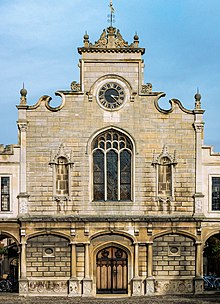
The colleges at the University of Cambridge were originally an incidental feature of the university; no college is as old as the university itself. The colleges were endowed fellowships of scholars. There were also institutions without endowments, called hostels, which were gradually absorbed by the colleges over the centuries, and they have left some traces, such as the name Garret Hostel Lane.
Hugh de Balsham, Bishop of Ely, founded Peterhouse, Cambridge's first college, in 1284. Multiple additional colleges were founded during the 14th and 15th centuries, but colleges continued being established through modern times, though there was a 204-year gap between the founding of Sidney Sussex in 1596 and that of Downing in 1800. The most recent college to be established is Robinson, which was built in the late 1970s. However, Homerton College only achieved full university college status in March 2010, making it technically the newest full college.
In medieval times, many colleges were founded so that their members could pray for the souls of the founders. University of Cambridge colleges often were associated with chapels or abbeys. The colleges' focus began to shift in 1536, however, with the Dissolution of the Monasteries. Henry VIII ordered the university to disband its Faculty of canon law and to stop teaching scholastic philosophy. In response, colleges changed their curricula away from canon law, and towards the classics, the Bible, and mathematics.
Nearly a century later, the university found itself at the centre of a Protestant schism. Many nobles, intellectuals, and even commoners saw the Church of England as too similar to the Catholic Church and felt that it was being used by The Crown to usurp the counties' rightful powers. East Anglia emerged as the centre of what ultimately became the Puritan movement. In Cambridge, the Puritan movement was particularly strong at Emmanuel, St Catharine's Hall, Sidney Sussex, and Christ's College. These colleges produced many non-conformist graduates who greatly influenced, by social position or preaching, some 20,000 Puritans who ultimately left England for New England and especially the Massachusetts Bay Colony during the Great Migration decade of the 1630s, becoming America's first settlers. Oliver Cromwell, Parliamentary commander during the English Civil War and head of the English Commonwealth from 1649 to 1660, attended Sidney Sussex.
Mathematics and mathematical physics
See also: Lucasian Professor of Mathematics, Mathematical Tripos, and Senior WranglerThe university quickly established itself as a global leader in the study of mathematics. Examination in mathematics was initially compulsory for all undergraduates studying for the Bachelor of Arts degree, the most common degree first offered at Cambridge. From the time of Isaac Newton in the late 17th century until the mid-19th century, the university maintained an especially strong emphasis on applied mathematics, particularly mathematical physics. The university established a mathematics exam known as a Tripos. Students awarded first class honours after completing the mathematics Tripos exam are called wranglers, and the top student among them is known as the Senior Wrangler, a position that has been described as "the greatest intellectual achievement attainable in Britain."
The Cambridge Mathematical Tripos is highly competitive and has helped produce some of the most famous names in British science, including James Clerk Maxwell, Lord Kelvin, and Lord Rayleigh. However, some famous students, such as G. H. Hardy, disliked the Tripos system, feeling that students were becoming too interested in accumulating high exam marks and less interested in the subject itself.
Pure mathematics at Cambridge in the 19th century achieved great things, but also missed out on substantial developments in French and German mathematics. Pure mathematical research at Cambridge finally reached the highest international standard in the early 20th century, thanks largely to G. H. Hardy and his collaborators, J. E. Littlewood and Srinivasa Ramanujan. W. V. D. Hodge established Cambridge as a global leader in geometry in the 1930s.
Although diversified in its research and teaching interests, Cambridge today maintains its traditional strength as a world leader in the teaching of mathematics. Cambridge alumni have won six Fields Medals and one Abel Prize for mathematics, and individuals representing Cambridge have won four additional Fields Medals.
Modern period
See also: Cambridge movement (philosophy) and Cambridge University Act 1856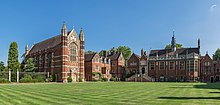
The Cambridge University Act 1856 formalised the university's organisational structure and introduced the study of many new subjects, including theology, history and Modern languages. Resources necessary for new courses in the arts, architecture, and archaeology were donated by Viscount Fitzwilliam of Trinity College, who also founded the Fitzwilliam Museum. In 1847, Prince Albert was elected the university's chancellor in a close contest with the Earl of Powis. As chancellor, Albert reformed university curricula beyond its initial focus on mathematics and classics, adding modern history and the natural sciences. Between 1896 and 1902, Downing College sold part of its land to permit the construction of Downing Site, the university's new grouping of scientific laboratories for the study of anatomy, genetics, and Earth sciences. During this period, the New Museums Site was erected, including the Cavendish Laboratory, which has since moved to West Cambridge, and other departments for chemistry and medicine.
The University of Cambridge began to award PhD degrees in the first third of the 20th century; the first Cambridge PhD in mathematics was awarded in 1924.
The university contributed significantly to the Allies' forces in World War I with 13,878 members of the university serving and 2,470 being killed in the war. Teaching, and the fees it earned, nearly came to a stop during World War I, and severe financial difficulties followed. As a result, the university received its first systematic state support in 1919, and a Royal commission was appointed in 1920 to recommend that the university (but not its colleges) begin receiving an annual grant. Following World War II, the university experienced a rapid expansion in applications and enrollment, partly due to the success and popularity gained by many Cambridge scientists.
Parliamentary representation
Main article: Cambridge University (UK Parliament constituency) See also: Category:Members of the Parliament of the United Kingdom for the University of CambridgeCambridge was one of only two universities to hold parliamentary seats in the Parliament of England and was later one of only eight represented in the Parliament of the United Kingdom. The constituency was created by a Royal charter of 1603 and returned two members of parliament until 1950 when it was abolished by the Representation of the People Act 1948. The constituency was not a geographical area; rather, its electorate consisted of university graduates. Before 1918, the franchise was restricted to male graduates with a doctorate or MA degree.
Women's education

For the first several centuries of its existence, as was the case broadly in England and the world, the University of Cambridge was only open to male students. The first colleges established for women were Girton College (founded by Emily Davies in 1869) and Newnham College (founded by Anne Clough and Henry Sidgwick in 1872) followed by Hughes Hall (founded in 1885 by Elizabeth Phillips Hughes as the Cambridge Teaching College for Women), Murray Edwards College (founded in 1954 by Rosemary Murray as New Hall), and Lucy Cavendish College in 1965. Prior to ultimately being permitted admission to the university, female students had been granted the right to take University of Cambridge exams beginning in the late 19th century. In 1948, the university officially permitted them entry to the university. Women were allowed to study courses, take examinations, and have prior exam results recorded retroactively, dating back to 1881; for a brief period after the turn of the 20th century, this allowed the steamboat ladies to receive ad eundem degrees from the University of Dublin.
Beginning in 1921, women were awarded diplomas that conferred the title associated with the Bachelor of Arts degree. But since women were not yet admitted to the Bachelor of Arts degree program, women were excluded from the university's governance structure. Since students must belong to a college, and since established colleges remained closed to women, women found admissions restricted to few university colleges that had been established only for them. Darwin College, the first graduate college of the university, matriculated both male and female students from its inception in 1964 and elected a mixed fellowship. Among undergraduate colleges, starting with Churchill, Clare, and King's Colleges, the former male-only colleges began to admit women between 1972 and 1988. Among female-only colleges, Girton began admitting male students in 1979, and Lucy Cavendish began admitting men in 2021. But the other female-only colleges have remained female-only colleges. As a result of St Hilda's College, Oxford ending its ban on male students in 2008, Cambridge is now the only remaining university in the United Kingdom with female-only colleges (Newnham and Murray Edwards). As of the 2019–2020 academic year, the university's male to female enrollment, including post-graduates, was nearly balanced with its total student population being 53% male and 47% female.
Town and gown
Main article: Town and gown See also: Away with the learning of clerks, away with it!The relationship between the university and the city has sometimes been uneasy. The phrase town and gown is employed to distinguish between Cambridge residents and University of Cambridge students, who historically wore academical dress. There are many stories of ferocious rivalry between Cambridge's residents and university students. During the Peasants' Revolt of 1381, strong clashes led to attacks and looting of university properties while locals contested the privileges granted by the government to the academic staff. Residents burned university property in Market Square to the famed rallying cry "Away with the learning of clerks, away with it!". Following these events, the University of Cambridge's Chancellor was given special powers allowing him to prosecute criminals and reestablish order in the city. Attempts at reconciliation between the city's residents and students followed. In the 16th century, agreements were signed to improve the quality of streets and student accommodation around the city. However, this was followed by new confrontations when the plague reached Cambridge in 1630 and colleges refused to assist those affected by the disease by locking their sites.
Such conflicts between Cambridge's residents and university students have largely disappeared. The university is a source of enormous employment and expanded wealth in Cambridge and the region. The university also has proven a source of enormous growth in high tech and biotech start-ups and established companies and associated providers of services to these companies. The economic growth associated with the university's high tech and biotech growth has been labeled the Cambridge Phenomenon, and has included the addition of 1,500 new companies and as many as 40,000 new jobs added between 1960 and 2010.
Myths, legends and traditions
Main article: University of Cambridge legends See also: Category:Terminology of the University of Cambridge
Partly because of the University of Cambridge's extensive eight century history, the university has developed a large number of traditions, myths, and legends. Some are true, some are not, and some were true but have been discontinued but have been propagated nonetheless by generations of students and tour guides.
One such discontinued tradition is that of the wooden spoon, the prize awarded to the student with the lowest passing honours grade in the final examinations of the Mathematical Tripos. The last of these spoons was awarded in 1909 to Cuthbert Lempriere Holthouse, an oarsman of the Lady Margaret Boat Club of St John's College. It was over one metre in length and had an oar blade for a handle. It can now be seen outside the Senior Combination Room of St John's. Since 1908, examination results have been published alphabetically within class rather than in strict order of merit, which made it difficult to ascertain the student with the lowest passing grade deserving of the spoon, leading to discontinuation of the tradition.
Each Christmas Eve, The Festival of Nine Lessons and Carols sung by the Choir of King's College, Cambridge are broadcast globally on BBC World Service television and radio and syndicated to hundreds of additional radio stations in the U.S. and elsewhere. The radio broadcast has been a national Christmas Eve tradition since 1928, though the festival has existed since 1918. The first television broadcast of the festival was in 1954.
 Front Court of King's College
Front Court of King's College
Locations and buildings

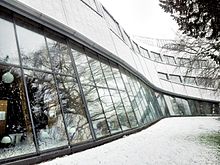
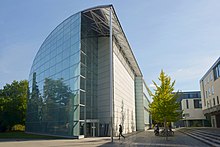
Buildings
See also: A Classical Adventure: The Architectural History of Downing College, Cambridge; Cambridge Medical School building; Cambridge Observatory; Cambridge University Library; Cambridge University Real Tennis Club; Fitzwilliam Museum; Goldie Boathouse; Lady Mitchell Hall; Old Schools; Senate House, Cambridge; Scott Polar Research Institute; University of Cambridge Sports Centre; and William Gates Building, CambridgeThe university occupies a central location within the city of Cambridge with the students taking up a roughly 20 percent of the town's population, and contributing on whole to a lower age demographic in the city.
Most of the university's older colleges are situated nearby the city centre, through which flows River Cam, which students and others traditionally punt to appreciate the university buildings and surroundings viewable from the river.
Other notable buildings include King's College Chapel, the history faculty building designed by James Stirling, and the Cripps Building at St John's College. The brickwork of several colleges is notable: Queens' College has "some of the earliest patterned brickwork in the country" and the brick walls of St John's College provide examples of English bond, Flemish bond, and Running bond.
Sites
The university is divided into several sites where departments are located. These include:
- Addenbrooke's Hospital
- Downing Site
- Madingley/Gorton
- New Museums Site
- North West Cambridge Development
- Old Addenbrooke's Site
- Old Schools
- Silver Street/Mill Lane
- Sidgwick Site
- West Cambridge
The university's School of Clinical Medicine is based in Addenbrooke's Hospital, where medical students undergo their three-year clinical placement period after obtaining their BA degree. The West Cambridge site is undergoing a major expansion and will host new buildings and fields for university sports. Since 1990, Cambridge Judge Business School, on Trumpington Street, provides management education courses and is consistently ranked within the top 20 business schools globally by Financial Times.
Given that the sites are in relative proximity and the area around Cambridge is reasonably flat, one of the favourite modes of transport for students is the bicycle; an estimated fifth of journeys in the city are made by bike, a figure enhanced by the fact that students are not permitted to hold car park permits except under special circumstances.
Notable locations
The University of Cambridge and its constituency campuses include many notable locations, some iconic, of historical, academic, religious, and cultural significance, including:
- Bridge of Sighs, Cambridge
- Cambridge University Botanic Garden
- Church of St Mary the Great, Cambridge
- Downing Site
- Fenner's
- Goldie Boathouse
- King's College Chapel, Cambridge
- Lady Mitchell Hall
- Mathematical Bridge
- Nevile's Court, Trinity College, Cambridge
- Sidgwick Site
- St Bene't's Church
- The Backs
- Trinity College Chapel, Cambridge
- West Cambridge
Organisation and administration
See also: List of institutions of the University of Cambridge
Cambridge is defined as a collegiate university, meaning that it is made up of self-governing and independent colleges, each with its own property and income. Most colleges bring together academics and students from a broad range of disciplines. Within each faculty, school, or department within the university, are academics from many differing colleges.
The faculties are responsible for ensuring that lectures are given, arranging seminars, performing research and determining the syllabi for teaching, all of which is overseen by the university's general board. Together with the central administration headed by the Vice-Chancellor, they make up the University of Cambridge. Facilities such as libraries are provided on all these levels by the university (the Cambridge University Library), by the faculties (including faculty libraries such as the Squire Law Library), and by individual colleges, all of which maintain a multi-discipline library generally designed for each college's respective undergraduates.
Legally, the university is an exempt charity and a common law corporation with the corporate title The Chancellor, Masters, and Scholars of the University of Cambridge.
Colleges
Main article: Colleges of the University of Cambridge

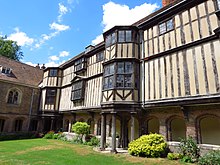

The colleges are self-governing institutions with their own endowments and property, each founded as components of the university. All students and most academics are attached to a college. The colleges' importance lies in the housing, welfare, social functions, and undergraduate teaching they provide. All faculties, departments, research centres, and laboratories belong to the university, which arranges lectures and awards degrees but undergraduates receive their overall academic supervision through small group teaching sessions often with just one student within the colleges (though in many cases students go to other colleges for supervision if the teaching fellows at their college do not specialise in a student's particular area of focus). Each college appoints its own teaching staff and fellows, both of whom are members of a university department. The colleges also decide which undergraduates to admit to the university, in accordance with university regulations.
Cambridge has 31 colleges, two of which, Murray Edwards and Newnham, admit women only. The other colleges are mixed. Darwin was the first college to admit both men and women while, beginning in 1972, Churchill, Clare, and King's were the first previously all-male colleges to admit female undergraduates. In 1988, Magdalene became the last all-male college to accept women. Clare Hall and Darwin admit only postgraduates, and Hughes Hall, St Edmund's, and Wolfson admit only mature (i.e., 21 years or older on date of matriculation) students, encompassing both undergraduate and graduate students). Lucy Cavendish, which was previously a women-only mature college, began admitting both men and women in 2021. All other colleges admit both undergraduate and postgraduate students with no age restrictions.
Colleges are not required to admit students in all subjects; some colleges choose not to offer subjects such as architecture, art history, or theology, but most offer close to the complete range of academic specialties and related courses. Some colleges maintain a relative strength and associated reputation for expertise in certain academic disciplines. For example, Churchill has a reputation for its expertise and focus on the sciences and engineering, while others such as St Catharine's aim for a balanced intake. Other colleges have more informal academic focus and even demonstrated ideological focus, such as King's, which is known for its left-wing political orientation, and Robinson and Churchill, both of which have a reputation in sustainability and environmentalism.
Costs to students for room and board vary considerably from college to college. Similarly, the investment in student education by each college at the university varies widely between the colleges.
There are several theological colleges, including Westcott House, Westminster College, and Ridley Hall Theological College, that are members of the Cambridge Theological Federation and only informally associated with the university.
The University of Cambridge's 31 colleges include:
 Christ's
Christ's Churchill
Churchill Clare
Clare Clare Hall
Clare Hall Corpus Christi
Corpus Christi Darwin
Darwin Downing
Downing Emmanuel
Emmanuel Fitzwilliam
Fitzwilliam Girton
Girton Gonville & Caius
Gonville & Caius Homerton
Homerton Hughes Hall
Hughes Hall Jesus
Jesus King's
King's Lucy Cavendish
Lucy Cavendish Magdalene
Magdalene Murray Edwards
Murray Edwards Newnham
Newnham Pembroke
Pembroke Peterhouse
Peterhouse Queens'
Queens' Robinson
Robinson Selwyn
Selwyn Sidney Sussex
Sidney Sussex St Catharine's
St Catharine's St Edmund's
St Edmund's St John's
St John's Trinity
Trinity Trinity Hall
Trinity Hall Wolfson
Wolfson
Schools, faculties and departments
Main article: List of institutions of the University of Cambridge § Schools, Faculties, and Departments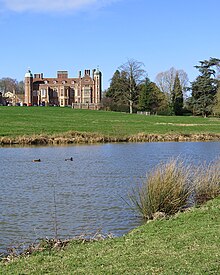
In addition to the 31 colleges, the university is made up of over 150 departments, faculties, schools, syndicates, and other institutions. Members of these are usually members of one of the colleges with responsibility for the entire academic programme of the university divided among them.
The university has a department dedicated to providing continuing education, the Institute of Continuing Education, which is based primarily in Madingley Hall, a 16th-century manor house in Cambridgeshire. Its award-bearing programmes range from undergraduate certificates through part-time master's degrees.
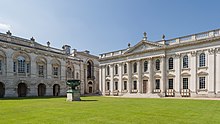
A school in the University of Cambridge is a broad administrative grouping of related faculties and other units. Each has an elected supervisory body known as a Council, composed of representatives of the various constituent bodies. The University of Cambridge maintains six schools:
- Arts and Humanities
- Biological Sciences
- Clinical Medicine
- Humanities and Social Sciences
- Physical Sciences
- Technology
Teaching and research at the university is organised by faculties. The faculties have different organisational substructures that partly reflect their history and partly the university's operational needs, which may include a number of departments and other institutions. A small number of bodies called Syndicates hold responsibility for teaching and research, including for the University of Cambridge Local Examinations Syndicate, the University Press, and the University Library.
Central administration
Chancellor and Vice-Chancellor
See also: List of chancellors of the University of Cambridge and List of vice-chancellors of the University of Cambridge

The Chancellor of the university is limitless term position that is mainly ceremonial and is held currently by David Sainsbury, Baron Sainsbury of Turville, who succeeded the Duke of Edinburgh following his retirement on his 90th birthday in June 2011. Lord Sainsbury was nominated by the nomination board. The election took place on 14 and 15 October 2011 with Sainsbury taking 2,893 of the 5,888 votes cast, and winning on the election's first count.
The current Acting Vice-Chancellor is Anthony Freeling. While the Chancellor's office is ceremonial, the Vice-Chancellor is the university's de facto principal administrative officer. The university's internal governance is carried out almost entirely by Regent House augmented by some external representation from the Audit Committee and four external members of the University's Council.
Senate and the Regent House

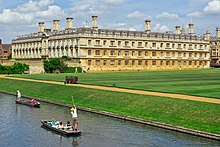
The university Senate consists of all holders of the MA degree or higher degrees and is responsible for electing the Chancellor, the High Steward, and two members of the House of Commons (until the Cambridge University constituency was abolished in 1950). Prior to 1926, the university Senate was the university's governing body, fulfilling the functions that Regent House provides today. Regent House is the university's governing body, a direct democracy comprising all resident senior members of the university and the colleges, together with the Chancellor, the High Steward, the Deputy High Steward, and the Commissary. Public representatives of the Regent House are the two Proctors, elected to serve for one year upon nomination by the Colleges.
Council and General Board
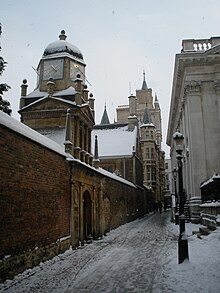
Although the University Council is the university's principal executive and policy-making body, the Council reports to, and is held accountable by, Regent House through a variety of checks and balances. The council is obliged to advise Regent House on matters of general concern to the university. It does this by publishing notices to the Cambridge University Reporter, the university's official journal. Since January 2005, the council's membership has included two external members. In March 2008, Regent House voted to increase from two to four the number of external members on the council. and this was approved by Her Majesty the Queen in July 2008.
The General Board of the Faculties is responsible for the university's academic and educational policies and is accountable to the council for its management of these affairs.
Faculty Boards are accountable to the General Board; other Boards and Syndicates are accountable either to the General Board or to the council. Under this organizational structure, the university's various arms are kept under the supervision of both the central administration and Regent House.
Finances
Benefactions and fundraising
In the fiscal year ending 31 July 2019, the central university, excluding colleges, reported total income of £2.192 billion, of which £592.4 million was from research grants and contracts. In the decade prior to 2019, the University of Cambridge reported an average of £271m a year in philanthropic donations.
The Stormzy Scholarship for Black UK Students covers tuition costs for two students and maintenance grants for up to four years.
In 2000, Bill Gates of Microsoft donated US$210 million through the Bill and Melinda Gates Foundation to endow Gates Scholarships for students from outside the UK pursuing post-graduate study at Cambridge.
In October 2021, the university suspended its £400m collaboration with the United Arab Emirates, citing allegation that the UAE was involved in illegal hacking using the NSO Group's Pegasus software. UAE also was behind the leak of over 50,000 phone numbers, including hundreds belonging to British citizens. The university's outgoing Vice-Chancellor, Stephen Toope said the decision to suspend its collaboration with UAE also was a result of additional revelations about UAE's Pegasus software hacking.
Bonds
The University of Cambridge borrowed £350 million by issuing a 40-year security bond in October 2012. Its interest rate is about 0.6 percent higher than a British government 40-year bond. Vice-Chancellor Leszek Borysiewicz praised the bond issuance. In a 2010 report, the Russell Group of 20 leading universities concluded that higher education could be financed by bond issuance.
Affiliations and memberships
The University of Cambridge is a member of the Russell Group of research-led British universities, the G5, the League of European Research Universities, and the International Alliance of Research Universities, and forms part of the so-called golden triangle of research intensive and southern English universities. It is also closely linked with the development of the high-tech business cluster known as Silicon Fen and is part of Cambridge University Health Partners, Europe's largest academic health science centre.
Academic profile
Admissions
| 2019 | 2018 | 2017 | 2016 | 2015 | 2014 | 2013 | |
|---|---|---|---|---|---|---|---|
| Applications | 19,359 | 18,378 | 17,235 | 16,795 | 16,505 | 16,970 | 16,330 |
| Offer Rate (%) | 24.3 | 24.8 | 31.2 | 33.8 | 33.5 | 32.5 | 32.2 |
| Enrols | 3,528 | 3,465 | 3,480 | 3,440 | 3,430 | 3,425 | 3,355 |
| Yield (%) | 75.2 | 76.0 | 64.7 | 60.6 | 62.0 | 62.1 | 63.8 |
| Applicant/Enrolled Ratio | 5.49 | 5.30 | 4.95 | 4.88 | 4.81 | 4.95 | 4.87 |
| Average Entry Tariff | — | — | — | 226 | 592 | 600 | 601 |
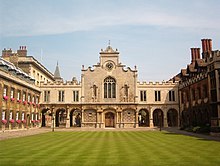
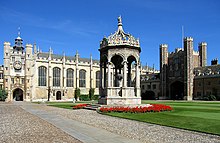
Process
Admission to the University of Cambridge ranks among the most selective and competitive of any university in the world. In 2018–2019, only 18.8% of applicants were admitted, which ranks among the most selective percentages among all of the world's elite universities. In 2021, Cambridge introduced an over-subscription clause to its offers, which allows the university to withdraw acceptances if too many students meet its selective entrance criteria. The clause can be invoked in the event of circumstances outside the reasonable control of the university. The clause was introduced following a record number of A-level pupils obtaining the highest grades from teacher assessment, which was introduced due to the cancellation of A-level examinations during the COVID-19 pandemic.
The university's standard offer for most courses is set at A*AA, with A*A*A for sciences courses (or equivalent in other examination systems, e.g. 7,6,6 or 7,7,6 in IB). Due to a high proportion of applicants receiving the highest school grades, an interview process was introduced as a component of consideration for admission. Interviews are performed by College Fellows, who evaluate candidates on unexamined factors including potential for original thinking and creativity. For exceptional candidates, a matriculation offer is sometimes offered, requiring only two A-levels at grade E or above. Sutton Trust maintains that Oxford University and the University of Cambridge recruit disproportionately from eight schools which accounted for 1,310 Oxbridge places over three years contrasted with 1,220 from 2,900 other schools.
Strong applicants who are not successful in being admitted to their chosen college at the university may be placed in the Winter Pool, where they can be considered for admission to other university colleges, which maintains consistency throughout the colleges, some of which receive more applicants than others.
Undergraduate applications are processed through UCAS, and the deadline for their submission currently is mid-October in the year before beginning. Until the 1980s, candidates for all subjects were required to take special entrance examinations, which have since been replaced by additional tests for some subjects, such as the Thinking Skills Assessment and Cambridge Law Test. The university has at times considered reintroducing an admissions exam for all subjects.
Graduate admission is first decided by the faculty or department responsible for the applicant's respective academic subject. An offer of acceptance effectively guarantees admission to a college, though not necessarily the applicant's preferred choice.
Winter pool
The Winter Pool or inter-College Pool is an important part of the undergraduate application process intended to ensure that the best applicants are offered places. Approximately 20–25% of undergraduate places are awarded through the Pool. Each college can place applicants in the winter pool. These applicants' applications are then considered by Admissions Tutors and/or Directors of Studies of all colleges during the pool, which takes place over three days in January prior to admissions decisions being released by the university.
For each subject, each college will create an ordered list of the pooled applicants they want, and take turns choosing applicants. Colleges with specific student requirements (i.e. the mature colleges and the women-only colleges) are given priority over applicants eligible for their colleges. Some applicants will be fished (selected from the pool) by the college that originally pooled them.
Once all the colleges have fished as many applicants as they need, the pool ends. Some fished applicants will then be re-interviewed by their fishing college before final admissions decisions are made.
Colleges can pool any candidate, either because the college has no space but believes the applicant is strong enough to get a place, or because the college wants to compare that applicant to other pooled applicants. Most applicants in the pool are pooled at their original college's discretion, but some candidates meet the compulsory pooling criteria. For applicants applying for 2022 entry, compulsory pooling has been suspended for all subjects with pre-interview assessments as well as maths.
There were, as of the 2020/21 admissions cycle, only two grounds for compulsory pooling. For post-qualified applicants, their achieved grades at A level or equivalent (listed below) and, for applicants with overseas interviews, an interview score of at least 8 in all interviews. The second criterion does not apply to medicine applicants. Previously, AS-Level UMS have been used as pooling criteria, but after A-levels became linear this was discontinued.
| Qualification Type | Minimum grades | Notes |
|---|---|---|
| A-Levels | A*A*A* | For science applicants, at least three A*s must be in science/maths subjects |
| International Baccalaureate | 43 points overall with 776 at higher level or
42 points overall with 777 at higher level |
For science applicants, at least two 7s must be in science/maths subjects |
| Scottish Advanced Highers | A1A1A1 | For science applicants, at least 3 A1s must be in science/maths subjects |
As of 2012, there is only one specifically identified category for pooled applicants, which is S — in special need of reassessment. This is for candidates whose initial interview scores are of questionable accuracy, for example if a candidate received very different scores from different interviewers, experienced technical issues (in the case of interviews conducted over the internet) or was affected by significant extenuating circumstances (for example illness or the loss of a family member).
Pooled applicants who are "fished" by a college may be offered a place immediately or they may be invited for interview. In 2020 just 89 applicants were invited to re-interview, 34 of whom received offers.
Each year about 3,500 applicants receive offers from their preference college and a further 1,000–1,100 applicants are made an offer by another college through the Pool. On average one in five applicants is pooled and around one in four pooled applicants receives an offer of a place.
Statistics released by the University show that some colleges regularly receive particularly high numbers of applicants, and these colleges tend to take fewer applicants from the Pool. Other colleges regularly draw a greater proportion of their undergraduate intake from the Pool.
Access

Public debate in the United Kingdom continues over whether admissions processes at Oxford and Cambridge are entirely merit-based and fair, whether enough students from state schools are encouraged to apply to Cambridge, and whether these students are offered sufficient admission. In 2020–21, 71% of all successful applicants were from state schools (about 93% of all students in the UK attend state schools, and 82% of post-16 students). Critics have argued that the relative lower percent of state school applicants with the required grades for admission to Cambridge and Oxford has had a negative impact on Oxford and Cambridge's collective reputation, though both universities have encouraged pupils from state schools to apply for Cambridge to help redress the perceived imbalance. Others counter that government pressure to increase state school admissions constitutes inappropriate social engineering. The proportion of undergraduates drawn from independent schools has dropped over the years, constituting, as of 2020, a minority (26%) of total admissions among the university's 3,436 applicants from independent schools compared to 23% of the 9,237 applications from state schools. Cambridge, together with Oxford and Durham, is among those universities that have adopted formulae that issues a rating to the GCSE performance of every school in the country to weigh the scores of university applicants.
With the release of admissions figures, a 2013 article in The Guardian reported that ethnic minority candidates had lower success rates in individual subjects even when they had the same grades as white applicants. The university was criticised for what was seen as institutional discrimination against ethnic minority applicants in favour of white applicants. The university denied the claims of institutional discrimination, stating the figures did not take into account other variables. A subsequent article reported that, in the years 2010–2012, ethnic minority applicants to medicine with 3 A* grades or higher were 20% less likely to gain admission than white applicants with similar grades. The university refused to provide figures for a wider range of subjects, claiming such reporting would prove excessively costly.
There are a number of educational consultancies that offer support with the application process to the University of Cambridge. Some make claims of improving chances for admission, though these claims have never been independently verified. None of these companies are affiliated with or endorsed by the University of Cambridge. The university informs applicants that all necessary information regarding the application process is publicly available through the university and none of these services is providing any insight not already publicly available to applicants.
The University of Cambridge has been criticised for admitting a lower percentage of Black students, though many apply. Of the 31 colleges at Cambridge, six of them admitted fewer than 10 Black or mixed race students between 2012 and 2016. Similar criticism exists over a relatively lower admission rate for white working class applicants; in 2019, only 2% of admitted students were white working class.
In January 2021, Cambridge created foundation courses for disadvantaged students. While the usual entry requirements are A*AA in A-Levels, the one-year foundation course has 50 places for students who achieve BBB. If successful on the course, students receive a recognised CertHE qualification and can progress to degrees in the arts, humanities, and social sciences at the university. Candidates include those who have been in care, who are estranged from their families, who have missed significant periods of learning because of health issues, those from low-income backgrounds and those from schools that send few students to university.
Teaching
See also: List of professorships at the University of Cambridge
The academic year is divided into three academic terms, determined by the statutes of the university. Michaelmas term lasts from October to December; the Lent term last from January to March; and the Easter term last from April to June.
Within these terms, undergraduate teaching takes place within eight-week periods called Full Terms. According to university statutes, it is a requirement during these periods that all students should live within three miles of the Church of St Mary the Great; this is defined as keeping term. Students eligible for graduation must fulfill this condition for nine terms (three years) while pursuing a Bachelor of Arts or twelve terms (four years) when studying for a Master of Science, engineering, or mathematics degree.
These terms are shorter than those of many other British universities. Undergraduates are also expected to prepare heavily in the three holidays (known as the Christmas, Easter, and Long Vacation holiday periods), which is they are referred to by the university as vacations rather than holidays; students vacate the premises but are still expected to be pursuing studies and assignments.
The Tripos exam involves a mixture of lectures (organised by the university departments) and supervisions (organised by the colleges). Science subjects involve laboratory sessions organised by the departments. The relative importance of these methods of teaching varies according to the needs of the subject. Supervisions are typically weekly hour-long sessions in which small groups of students (usually between one and three) meet with a member of the teaching staff or with a doctoral student. Students are normally required to complete an assignment in advance of this supervision, which they then discuss with the supervisor during the session. The assignment is often an essay on a subject assigned by the supervisor, or a problem sheet set by the lecturer. Depending on the subject and college, students sometimes receive between one and four supervisions per week. This pedagogical system is often cited as being unique to Oxford (where supervisions are known as tutorials) and Cambridge and is sometimes credited with the exceptional nature generally associated with the education at these two world-renowned universities.
A tutor named William Farish developed the concept of grading students' work quantitatively at the University of Cambridge in 1792.
Research
See also: Category:Departments of the University of CambridgeThe University of Cambridge has research departments and teaching faculties in nearly every academic discipline, and ll research and lectures are conducted by university departments. The colleges are charged with giving or arranging most supervisions, student accommodation, and funding most extracurricular activities. During the 1990s, the University of Cambridge added a substantial number of new specialist research laboratories on several sites around the city, and major expansion continues on a number of sites. The University of Cambridge also maintains a research partnership with MIT in the United States, known as the Cambridge–MIT Institute.
Graduation tradition and ceremony
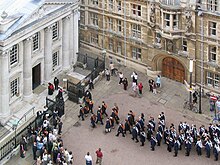
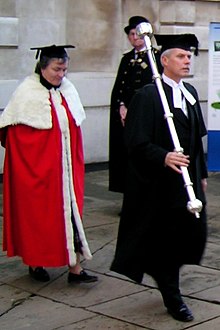
Each graduation is a separate act of the university's governing body, Regent House, and must be voted on as with any other act. A formal meeting of Regent House, known as a congregation, is held for this purpose. This is typically the final act during which all university procedures for undergraduate and graduate students and other degrees are finalized. After degrees are approved, candidates must request their respective Colleges to present them during commencement congregation.
Graduates receiving an undergraduate degree wear the academic dress to which they are entitled prior to graduating; for example, most students becoming Bachelor of Arts graduates wear undergraduate gowns and not BA gowns. Graduates receiving a post-graduate degree (e.g. PhD or Master's) wear the academic dress that they were entitled to before graduating if their first degree was also from the University of Cambridge; if their first degree was from another university, they wear the academic dress of the degree that they are about to receive. The BA gown without the strings is worn if the graduate is 24 years old or younger, and the MA gown without strings is worn if the graduate is 24 years old or over. Graduates are presented their degrees in Senate House by each respective college in order of foundation or recognition by the university, except for the university's royal colleges.
During the congregation, graduands are brought forth by the Praelector of their respective college, who takes them by the right hand and presents them to the vice-chancellor to receive the degree they have earned. The Praelector presents graduands with the following Latin statement (the following forms were used when the vice-chancellor was female), substituting "____" with the name of the degree:
"Dignissima domina, Domina Procancellaria et tota Academia praesento vobis hunc virum quem scio tam moribus quam doctrina esse idoneum ad gradum assequendum _____; idque tibi fide mea praesto totique Academiae.
(Most worthy Vice-Chancellor and the whole University, I present to you this man whom I know to be suitable as much by character as by learning to proceed to the degree of ____; for which I pledge my faith to you and to the whole University.)"
and female graduands with the following:
"Dignissima domina, Domina Procancellaria et tota Academia praesento vobis hanc mulierem quam scio tam moribus quam doctrina esse idoneam ad gradum assequendum ____; idque tibi fide mea praesto totique Academiae.
(Most worthy Vice-Chancellor and the whole University, I present to you this woman whom I know to be suitable as much by character as by learning to proceed to the degree of ____; for which I pledge my faith to you and to the whole University.)"
After presentation, the graduate is called by name and kneels before the vice-chancellor and proffers their hands to the vice-chancellor, who clasps them and then confers the degree through the following Latin statement, known as the Trinitarian formula (in nomine Patris...) may be omitted at the request of the graduand:
"Auctoritate mihi commissa admitto te ad gradum ____, in nomine Patris et Filii et Spiritus Sancti.
(By the authority committed to me, I admit you to the degree of ____, in the name of the Father and of the Son and of the Holy Ghost.)"
The new graduate then rises, bows and leaves the Senate House through the Doctor's door in Senate House Passage, where they receive their degree certificate.
For the Cambridge Master of Arts, the degree is not awarded by merit of study, but by right following six years and one term after matriculation.
Libraries and museums
Main article: Libraries of the University of Cambridge See also: Category:Museums of the University of Cambridge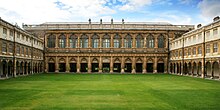
The university has 116 libraries. Cambridge University Library is the central research library, and holds over eight million volumes. It is a legal deposit library, which entitles it to request a free copy of every book published in the UK and Ireland.
In addition to the University Library and its dependents, almost every faculty or department has a specialised library; for example, the History Faculty's Seeley Historical Library houses in excess of 100,000 books. Every college also maintains a library, partly for the purpose of undergraduate teaching; older colleges often possess many early books and manuscripts in a separate library. For example, Trinity College's Wren Library houses over 200,000 books printed before 1800 and Corpus Christi College's Parker Library has one of the greatest collections of medieval manuscripts in the world with over 600 manuscripts. Churchill Archives Centre on the campus of Churchill College houses the official papers of former British prime ministers Winston Churchill and Margaret Thatcher.

Cambridge University operates eight arts, cultural, and scientific museums, and a botanic garden. Fitzwilliam Museum is the art and antiquities museum; Kettle's Yard is a contemporary art gallery; the Museum of Archaeology and Anthropology houses the university's collections of local antiquities along with archaeological and ethnographic artefacts from around the world; Cambridge University Museum of Zoology houses a wide range of zoological specimens from around the world and is known for its iconic finback whale skeleton that hangs outside. Cambridge University Museum of Zoology also holds specimens collected by Charles Darwin, an 1831 University of Cambridge alumnus. Other museums include the Museum of Classical Archaeology, Whipple Museum of the History of Science, Sedgwick Museum of Earth Sciences, the university's geology museum, and Polar Museum, part of the Scott Polar Research Institute, which is dedicated to Captain Scott and his men and focuses on the exploration of the Polar Regions.
The Cambridge University Botanic Garden, created in 1831, is the university's botanic garden.
Publishing and assessments
See also: Cambridge University PressThe university's publishing arm, the Cambridge University Press, is the oldest printer and publisher in the world and the second largest university press in the world.
The university established its Local Examination Syndicate in 1858. The syndicate is now known as Cambridge Assessment and is Europe's largest assessment agency. Cambridge Assessment plays a leading role in researching, developing, and delivering assessments across the globe.
Awards
Main article: Awards and prizes of the University of CambridgeThe University of Cambridge issues a considerable number of prestigious awards and prizes annually to accomplished University of Cambridge faculty and students. It also issues some awards to those of varying global academic accomplishment regardless of whether their recipient is affiliated with the University of Cambridge. Some of these awards and prizes rank among the world's most estimable academic and intellectual accomplishments. Among the most prominent of these are:
- Adam Smith Prize, awarded annually to the university's top-performing student in economics
- Adams Prize, awarded annually by University of Cambridge mathematics faculty to a UK resident in recognition of distinguished research in mathematics
- Browne Medal, awarded annually to students who win the Latin and Greek poetry competition
- Carus Greek Testament Prizes, a prize issued to winners of an annual competition of the university's undergraduate and graduate in Greek translation of New Testament passeges
- Chancellor's Gold Medal, a prize issued to winners of the university's annual poetry competition
- Porson Prize, a prize for students who develop the best Greek composition
- Raymond Horton-Smith Prize, awarded annually to the University of Cambridge Medical School student for the best medical school thesis
- Seatonian Prize, awarded annually for the best English language poem on a sacred subject
- Senior Wrangler, awarded annually to the university's top performing student on the Mathematical Tripos described as "the greatest intellectual achievement attainable in Britain."
- Thirlwall Prize, awarded every other year for the best essay about British literature or history
- Thomas Bond Sprague Prize, awarded to the student with the best performing score on Part III of the Mathematical Tripos
- Tyson Medal, awarded annually to the top astronomy student
Reputation and rankings
| National rankings | |
|---|---|
| Complete (2025) | 2 |
| Guardian (2025) | 2 |
| Times / Sunday Times (2025) | 3 |
| Global rankings | |
| ARWU (2024) | 3 |
| QS (2025) | 2 |
| THE (2025) | =3 |
The University of Cambridge is routinely ranked among the world's top five universities, and has sometimes been ranked as the world's best. As of 2023, the University of Cambridge is ranked the second best university in the world behind the Massachusetts Institute of Technology (MIT) by QS Rankings. As of 2023, ARWU ranked Cambridge the best university in Europe and third best in the world behind Harvard and Stanford. Times Higher Education ranks Cambridge the third best university in the world (tied with Stanford) in its 2023 rankings.
In April 2022, the QS Rankings ranked Cambridge's programmes among the world's best. Cambridge's Arts and Humanities program is ranked second best in the world. The University of Cambridge's Engineering and Technology program is ranked second best in the world. Its Life Sciences and Medicine program is ranked fourth best in the world. Its Natural Sciences program is ranked third best in the world. Its Social Sciences and Management program is ranked fourth best in the world.
In 2011, Times Higher Education recognised the University of Cambridge as one of the world's six super brands on its "World Reputation Rankings" along with Berkeley, Harvard, MIT, Oxford, and Stanford.
Cambridge has been highly ranked by most international and UK league tables. It ranked first in the world in the QS World University Rankings, for instance, from 2010–11 to 2011–12. A 2006 Newsweek overall ranking, which combined elements of the THES-QS and ARWU rankings with other factors that purportedly evaluated an institution's global "openness and diversity", suggested Cambridge was sixth around the globe. The Guardian, in 2012, ranked the University of Cambridge above Oxford in philosophy, law, politics, theology, mathematics, classics, anthropology, and modern languages. In the 2009 Times Good University Guide Subject Rankings, the University of Cambridge ranked first or tied for first in the world in 34 of the 42 academic disciplines offered at the university.
The University of Cambridge is ranked the best university in the UK by Times Ranking and the UK's second best university by The Complete University Guide. In the 2016 Complete University Guide, the University of Cambridge is ranked first among all UK's universities; this ranking is based on a broad range of criteria, including admissions standards, student satisfaction, quality of teaching in specific subjects, and job prospects for graduates. The university is ranked second best in the UK for the quality of graduates according to recruiters from UK's major companies.
In the 2001 and 2008 government Research Assessment Exercises, the University of Cambridge ranked first in the UK. In 2005, the University of Cambridge produced more PhDs annually than any other British university (over 30% more than second placed Oxford). In 2006, a Thomson Scientific study showed that the University of Cambridge had the highest research paper output of any British university and ranked first in research production as assessed by total paper citation count in ten of 21 major British research fields. An evidence-based study published the same year showed that the University of Cambridge won a larger proportion (6.6%) of total British research grants and contracts than any other university, ranking first in three out of four major measured discipline fields.
The University of Cambridge is also closely linked with the development of the high tech business cluster in and around Cambridge, known as Silicon Fen and sometimes referred to as the Cambridge Phenomenon. As of 2004, Silicon Fen was the second largest venture capital market in the world after Silicon Valley. Estimates in February 2006 reported that approximately 250 active startup companies directly linked with the University of Cambridge worth around US$6 billion were based in Silicon Fen.
Student life
See also: Academic dress of the University of Cambridge, List of organisations and institutions associated with the University of Cambridge, and List of social activities at the University of CambridgeFormal halls and May balls


One privilege of student life at Cambridge is the opportunity to attend formal dinners at a student's respective college, known as Formal Hall and occurring regularly during terms and daily at some of the university's colleges. During Formal Hall, students sit down for a meal in their gowns (at most colleges) while fellows and sometimes guests eat separately at a so-called High Table. The beginning and end of the function is usually marked with grace said in Latin. Special Formal Halls are organised for Christmas and the Commemoration of Benefactors.
After the exam period, May Week is held during which it is customary to celebrate by attending May Balls, which are all-night lavish parties held in the colleges where food and drinks and entertainment are provided. So-called Suicide Sunday, the first day of May Week, is a popular date for garden parties.
JCR and MCR
In addition to university-wide representation, students can participate in their own college student unions, which are known as JCR (Junior Combination Room) for undergraduates and MCR (Middle Combination Room) for post-graduates. These serve as a link between college staff and members and include officers elected annually between the fellow students; individual JCR and MCRs also report to CUSU, which offers training courses for some of the positions within the body.
Societies
Main page: Category:Clubs and societies of the University of Cambridge See also: Cambridge Union and Cambridge University Moral Sciences Club
Numerous student-run societies exist at the University of Cambridge in order to encourage students who share common passions or interests to periodically meet or discuss these interests. As of 2010, there were 751 registered societies at the university. In addition to these, individual colleges often promote their own societies and sports teams.
Although technically independent from the university, Cambridge Union, a globally-renowned debate organization and the oldest debate organization in the world, offers students high-level debate and public speaking experience. Drama societies include the Amateur Dramatic Club (ADC) and the comedy club Footlights, which are known for producing well-known show business personalities. The Cambridge University Chamber Orchestra offers a range of orchestra programs, including symphonies; the orchestra's membership is composed entirely of university students.
Sports
Main page: Category:Sport at the University of Cambridge See also: Cambridge University Cricket Club, List of Cambridge University Boat Race crews, and Cambridge University Polo Club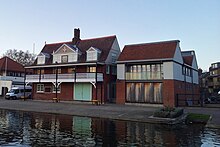
Rowing is one of the most popular sports at the University of Cambridge, and there are competitions between colleges, notably the bumps races. The University of Cambridge's rowing competition against Oxford is known as Boat Race. Varsity matches against Oxford also exist in other sports, including cricket, rugby, chess, and tiddlywinks. Athletes representing the university in certain sports are entitled to apply for a Cambridge Blue at the discretion of the Blues Committee, which includes captains of the thirteen most prestigious university sports teams. University organizations also include the self-described unashamedly elite Hawks' Club, open to men only and usually restricted to Cambridge Full Blues and Half Blues. The Ospreys are the equivalent female club.
The University of Cambridge Sports Centre opened in August 2013. Phase 1 included a 37x34m Sports Hall, a fitness suite, a strength and conditioning Room, a multi-purpose room and Eton and Rugby Fives courts. Phase 1b included five glass-backed squash courts and a team training room. Future phases include indoor and outdoor tennis courts and a swimming pool.
The university also has an athletic track at Wilberforce Road, an indoor cricket school, and Fenner's cricket ground.
Student newspapers and radio
See also: Category:Publications associated with the University of CambridgeCambridge's oldest student newspaper is Varsity. Established in 1947, notable figures to have edited the newspaper include Jeremy Paxman, BBC media editor Amol Rajan, and Vogue international editor Suzy Menkes. The student newspaper also has featured the early writings of Zadie Smith (who appeared in Varsity's literary anthology offshoot The Mays), Robert Webb, Tristram Hunt, and Tony Wilson.
Varsity has a circulation of 9,000 and is the only student publication published weekly. News stories from Varsity have appeared in The Guardian, The Times, The Sunday Times, The Daily Telegraph, The Independent, and i.
Other student publications include The Cambridge Student, which is funded by Cambridge Students' Union and is published fortnightly, and The Tab. Founded by two Cambridge students in 2009, The Tab is an online media outlet featuring light-hearted features content. The Mays is a literary anthology including student prose, poetry, and visual art from both University of Cambridge and Oxford students. Founded in 1992 by three Cambridge students, the anthology publishes once a year and is overseen by Varsity Publications Ltd., the same body responsible for Varsity. Another literary journal, Notes, is published roughly twice per term. Many colleges also have their own publications run by students.
The student radio station, Cam FM, is run jointly by University of Cambridge and Anglia Ruskin University students. One of few student radio stations to have an FM licence (frequency 97.2 MHz), the station hosts a mixture of music, talk, and sports shows.
Student Unions
Main article: Cambridge Students' UnionAll students at the University of Cambridge are represented by Cambridge Students' Union, which was founded in 2020 as a merger of two existing Student Unions in Cambridge: CUSU (the Cambridge University Students' Union) and the GU (the Graduate Union). CUSU previously represented all University students, and the GU solely represented graduate students.
The eight most important positions in the SU are occupied by sabbatical officers. In 2020, the sabbatical officers were elected with a turnout of 20.88% of the whole student body.
In 2021, Cambridge Students' Union launched a petition opposing the financial collaboration between the university and the government of United Arab Emirates that was worth £400m. The Union cited the "values gap" and threat to "academic freedom and institutional autonomy" reviewed following the release of internal UAE documents. Citing UAE's history of violating international human rights laws, Cambridge UCU warned that university staff were vulnerable to repression by gender, sexuality, or freedom of expression.
Controversies
See also: Cambridge School (intellectual history)In recent years, Cambridge has come under increased criticism and legal challenges resulting from alleged sexual harassment. In 2019, for example, former student Danielle Bradford, represented by sexual harassment lawyer Ann Olivarius, sued the university for its handling of her sexual misconduct complaint. "I was told that I should think about it very carefully because making a complaint could affect my place in my department," Bradford alleged in 2019. In 2020, hundreds of current and former students accused the university in a letter, citing "a complete failure" to deal with sexual misconduct complaints.
Notable alumni and academics
Main category: Alumni of the University of Cambridge Main articles: List of University of Cambridge people, List of Nobel laureates affiliated with the University of Cambridge, and Alumni CantabrigiensesOver the course of a history now exceeding 800 years, a number of University of Cambridge alumni and faculty have emerged as trailblazing thought leaders, innovators, and historical icons in their respective fields. As of 2020, 121 affiliates of the University of Cambridge have won 122 Nobel Prizes (more than any university or college in the world)) with 70 alumni winning the prize. As of 2019, Cambridge alumni, faculty members, and researchers have won 11 Fields Medals and seven Turing Awards.
Highly notable University of Cambridge alumni by specialty include:
Education
See also: Faculty of Education, University of CambridgeNotable alumni in academia include the founders and early professors of Harvard University, including John Harvard himself; Emily Davies, founder of Girton College at Cambridge, the first residential higher education institution for women, and John Haden Badley, founder of the first mixed-sex public school (i.e. not public) in England; Anil Kumar Gain, 20th century mathematician and founder of the Vidyasagar University in Bengal, Siram Govindarajulu Naidu, founder and vice chancellor of Sri Venkateswara University; and Menachem Ben-Sasson, president of Hebrew University of Jerusalem in Israel.
Humanities, music, and art


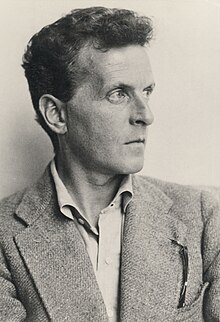
In the humanities, Greek studies were inaugurated at the University of Cambridge in the early sixteenth century by Desiderius Erasmus; contributions to the field were made by Richard Bentley and Richard Porson. John Chadwick was associated with Michael Ventris in the decipherment of Linear B. The Latinist A. E. Housman taught at the university but is more widely known for his contributions as a poet. Simon Ockley made a significant contribution to Arabic Studies.
University of Cambridge academics include economists such as John Maynard Keynes, Thomas Malthus, Alfred Marshall, Milton Friedman, Joan Robinson, Piero Sraffa, Ha-Joon Chang, and Amartya Sen. Notable philosophers include Francis Bacon, Bertrand Russell, Ludwig Wittgenstein, Leo Strauss, George Santayana, G. E. M. Anscombe, Karl Popper, Bernard Williams, Allama Muhammad Iqbal, and G. E. Moore. Notable alumni historians include Thomas Babington Macaulay, Frederic William Maitland, Lord Acton, Joseph Needham, E. H. Carr, Hugh Trevor-Roper, Rhoda Dorsey, E. P. Thompson, Eric Hobsbawm, Quentin Skinner, Niall Ferguson, Howard Markel, Arthur M. Schlesinger, Jr., and Karl Schweizer.
Notable alumni in religion include Rowan Williams, the former Archbishop of Canterbury and his predecessors; William Tyndale, the biblical translator; Thomas Cranmer, Hugh Latimer, and Nicholas Ridley, known as the Oxford martyrs from the place of their execution; Benjamin Whichcote and the Cambridge Platonists; William Paley, the Christian philosopher known primarily for formulating the teleological argument for the existence of God; William Wilberforce and Thomas Clarkson, largely responsible for the abolition of the slave trade; Evangelical churchman Charles Simeon; John William Colenso, the bishop of Natal who interpreted Scripture and its relations with native peoples that seemed dangerously radical at the time; John Bainbridge Webster and David F. Ford, theologians; and six winners of the Templeton Prize, the highest accolade in the world associated with the study of religion.
Notable University of Cambridge alumni in the field of musical composition include Ralph Vaughan Williams, Charles Villiers Stanford, William Sterndale Bennett, Orlando Gibbons and, more recently, Alexander Goehr, Thomas Adès, John Rutter, Julian Anderson, Judith Weir, and Maury Yeston. The university has also produced world-renowned instrumentalists and conductors, including Colin Davis, John Eliot Gardiner, Roger Norrington, Trevor Pinnock, Andrew Manze, Richard Egarr, Mark Elder, Richard Hickox, Christopher Hogwood, Andrew Marriner, David Munrow, Simon Standage, Endellion Quartet, and Fitzwilliam Quartet. Although the university in music predominantly for its contributions to choral music, university alumni in popular music include members of contemporary bands such as Radiohead, Hot Chip, Procol Harum, Clean Bandit, Sports Team songwriter and entertainer Jonathan King, Henry Cow, and the singer-songwriter Nick Drake.
Artists Quentin Blake, Roger Fry, Rose Ferraby, and Julian Trevelyan, sculptors Antony Gormley, Marc Quinn, and Anthony Caro, and photographers Antony Armstrong-Jones, Cecil Beaton, and Mick Rock are each University of Cambridge alumni.
Literature

Writers to have studied at the university include the Elizabethan dramatist Christopher Marlowe, his fellow University Wits, Thomas Nashe, and Robert Greene, arguably the first professional authors in England, and John Fletcher who collaborated with Shakespeare on The Two Noble Kinsmen, Henry VIII, and the lost Cardenio and succeeded him as house playwright for The King's Men. Samuel Pepys matriculated in 1650, known for his diary, the original manuscripts of which are now housed in the Pepys Library at Magdalene College. Lawrence Sterne, whose novel Tristram Shandy is judged to have inspired many modern narrative devices and styles. In the following century, the novelists W. M. Thackeray, author of Vanity Fair, Charles Kingsley, author of Westward Ho! and Water Babies, and Samuel Butler, remembered for The Way of All Flesh and Erewhon, are all University of Cambridge alumni.
Ghost story writer M. R. James served as provost of King's College from 1905 to 1918. Novelist Amy Levy was the first Jewish woman to attend the university. Modernist writers to have attended the university include E. M. Forster, Rosamond Lehmann, Vladimir Nabokov, Christopher Isherwood, and Malcolm Lowry. Playwright J. B. Priestley, physicist and novelist C. P. Snow, and children's writer A. A. Milne are each early 20th century alumni of the university. They were followed by postmodernists Patrick White, J. G. Ballard, and early postcolonial writer E. R. Braithwaite. More recently, alumni include comedy writers Douglas Adams, Tom Sharpe and Howard Jacobson, the popular novelists A. S. Byatt, Salman Rushdie, Nick Hornby, Zadie Smith, Louise Dean, Robert Harris, and Sebastian Faulks, action writers Michael Crichton, David Gibbins, and Jin Yong, and contemporary playwrights and screenwriters, including Julian Fellowes, Stephen Poliakoff, Michael Frayn, and Peter Shaffer.
Within poetry, University of Cambridge alumni include the poets Edmund Spenser, author of The Faerie Queene, metaphysical poets John Donne, who wrote For Whom the Bell Tolls, George Herbert and Andrew Marvell, and John Milton, who is renowned for Paradise Lost, Restoration poet and playwright John Dryden, pre-romantic poet Thomas Gray best known his Elegy Written in a Country Churchyard, William Wordsworth, and Samuel Taylor Coleridge, whose joint work Lyrical Ballads is often cited as marking the beginning of the Romantic movement, later Romantics including Lord Byron and the post-romantic Lord Tennyson, authors of the best known carpe diem poems, including Robert Herrick known for "To the Virgins, to Make Much of Time" with the first line "Gather ye rosebuds while ye may", and Andrew Marvell, who authored "To His Coy Mistress", classical scholar and lyric poet A. E. Housman, war poets Siegfried Sassoon and Rupert Brooke, modernist T. E. Hulme, confessional poets Ted Hughes, Sylvia Plath, and John Berryman, and, more recently, Cecil Day-Lewis, Joseph Brodsky, Kathleen Raine, and Geoffrey Hill. At least nine Poets Laureate graduated from the University of Cambridge. University alumni have also made notable contributions to literary criticism, having produced, among others, F. R. Leavis, I. A. Richards, C. K. Ogden, and William Empson, often collectively known as the Cambridge Critics, the Marxists Raymond Williams, sometimes regarded as the founding father of cultural studies, and Terry Eagleton, author of Literary Theory: An Introduction, the most successful academic book ever published, the aesthetician Harold Bloom, new historicist Stephen Greenblatt, and biographical writers including Lytton Strachey, a central figure in the Bloomsbury Group, Peter Ackroyd, and Claire Tomalin.
Actors and directors who attended the University of Cambridge include Ian McKellen, Eleanor Bron, Miriam Margolyes, Derek Jacobi, Michael Redgrave, James Mason, Emma Thompson, Stephen Fry, Hugh Laurie, John Cleese, John Oliver, Freddie Highmore, Eric Idle, Graham Chapman, Graeme Garden, Tim Brooke-Taylor, Bill Oddie, Simon Russell Beale, Tilda Swinton, Thandie Newton, Georgie Henley, Rachel Weisz, Sacha Baron Cohen, Tom Hiddleston, Sara Mohr-Pietsch, Eddie Redmayne, Dan Stevens, Jamie Bamber, Lily Cole, David Mitchell, Robert Webb, Richard Ayoade, Mel Giedroyc, and Sue Perkins. Directors Mike Newell, Sam Mendes, Stephen Frears, Paul Greengrass, Chris Weitz, and John Madden each are alumni of the university.
Mathematics and sciences


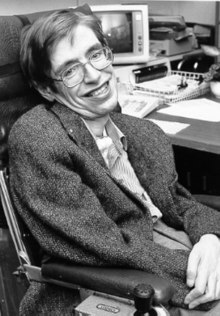
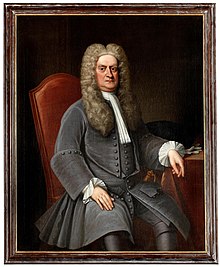
Isaac Newton, who conducted many of his experiments on the grounds of Trinity College, ranks among the most famed University of Cambridge alumni. Other alumni of the university include Francis Bacon, who developed the scientific method of inquiry, mathematicians John Dee and Brook Taylor, pure mathematicians G. H. Hardy, John Edensor Littlewood, Mary Cartwright, and Augustus De Morgan; Michael Atiyah, a geometry specialist; William Oughtred, inventor of the logarithmic scale; John Wallis, first to explain the law of acceleration; Srinivasa Ramanujan, a genius who made substantial contributions to mathematical analysis, number theory, infinite series, and continued fractions; and James Clerk Maxwell, who brought about the second great unification of physics (the first being accredited to Newton) with his classical theory of electromagnetic radiation. In 1890, mathematician Philippa Fawcett, a University of Cambridge student, registered the highest score in the Cambridge Mathematical Tripos exams but as a woman was then ineligible to claim the title Senior Wrangler.
In biology, University of Cambridge alumni include Charles Darwin, famous for developing the theory of natural selection and explaining evolution, is an alumnus of Christ's College. Biologists Francis Crick and James Watson developed the model explaining the three-dimensional structure of DNA while working at the Cavendish Laboratory; University of Cambridge graduates Maurice Wilkins and especially Rosalind Franklin produced key X-ray crystallography data, which was shared with Watson by Wilkins. Wilkins went on to verify the proposed structure and win the Nobel Prize with Watson and Crick. More recently, Ian Wilmut was part of the team responsible for the first cloning of a mammal (Dolly the Sheep in 1996), naturalist and broadcaster David Attenborough, ethologist Jane Goodall, expert on chimpanzees was a PhD student at the university, anthropologist Dame Alison Richard, former vice-chancellor of the university, and Frederick Sanger, a biochemist known for developing Sanger sequencing and receiving two Nobel prizes.
Despite the university's delay in admitting women to its full degree programs, women associated with the University of Cambridge have been at the heart of scientific research throughout the 20th century. Notable female scientists include biochemist Marjory Stephenson, plant physiologist Gabrielle Howard, social anthropologist Audrey Richards, psychoanalyst Alix Strachey, who with her husband translated the works of Sigmund Freud, Kavli Prize-winner Brenda Milner, respnsible for co-discovering specialised brain networks for memory and cognition. Veterinary epidemiologist Sarah Cleaveland has contributed to advances in eliminating rabies in the Serengeti.
The university is widely considered the birthplace of the computer; mathematician and father of the computer Charles Babbage designed the world's first computing system as early as the mid-1800s. Cambridge alumnus Alan Turing devised the basis for modern computing, and Maurice Wilkes later created the first programmable computer. The webcam was also invented at the University of Cambridge, showing the Trojan Room coffee pot in the university's computer laboratories.
In physics, Ernest Rutherford, regarded as the father of nuclear physics, spent much of his life at the university, where he worked closely with E. J. Williams and Niels Bohr, a major contributor to the understanding of the atom, J. J. Thomson, discoverer of the electron, James Chadwick, discoverer of the neutron, and John Cockcroft and Ernest Walton, responsible for first splitting the atom. J. Robert Oppenheimer, leader of the Manhattan Project that developed the atomic bomb, also studied under Rutherford and Thomson. Joan Curran devised the 'chaff' technique used during World War II to disrupt radar on Axis powers' planes.
University of Cambridge alumni in astronomy include John Herschel, Arthur Eddington, and Paul Dirac, discoverer of antimatter and one of the pioneers of quantum mechanics; Stephen Hawking, theoretical physicist and the university's long-serving Lucasian Professor of Mathematics until 2009; and Martin Rees, the current Astronomer Royal and former Master of Trinity College. John Polkinghorne, a mathematician before his ordination to the Anglican ministry, received the Templeton Prize for his work reconciling science and religion.
Other significant university alumni in science include Henry Cavendish, who discovered hydrogen; Frank Whittle, co-inventor of the jet engine; William Thomson (Lord Kelvin), who formulated the original Laws of Thermodynamics; William Fox Talbot, who invented the camera, Alfred North Whitehead, Einstein's major opponent; Jagadish Chandra Bose, one of the fathers of radio science; Lord Rayleigh, who made extensive contributions to both theoretical and experimental physics in the 20th century; and Georges Lemaître, who first proposed the Big Bang theory.
Politics
The University of Cambridge has a strong reputation in the field of politics, having educated:
- Fourteen British Prime Ministers, including Robert Walpole, considered the first Prime Minister of Great Britain
- At least 30 foreign heads of state or government, including presidents of India, Ireland, Zambia, South Korea, Uganda, and Trinidad and Tobago; along with prime ministers of India, Burma, Pakistan, South Africa, New Zealand, Poland, Australia, France, Singapore, Sri Lanka, Malta, Thailand, Malaysia, and Jordan
- At least nine monarchs, including Kings Edward VII, George VI, and (current King) Charles III of the United Kingdom, King Peter II of Yugoslavia, Queen Margrethe II of Denmark, and Queen Sofía of Spain. The university has also educated Prince Edward, Earl of Wessex and a large number of other royals
- Three signatories of the United States Declaration of Independence, Thomas Lynch Jr., Arthur Middleton, and Thomas Nelson Jr.
- Oliver Cromwell, Lord Protector of England (1653–58)
Sports
As of 2016, athletes who are university graduates or attendees had won 194 Olympic medals, including 88 gold medals. Alumni of the university include legendary Chinese six-time world table tennis champion Deng Yaping; sprinter and athletics hero Harold Abrahams; inventors of the modern game of football, H. de Winton and J. C. Thring; and George Mallory, the famed mountaineer. Indian cricketer Colonel H. H. Shri Sir Ranjitsinhji Vibhaji II and Jam Saheb of Nawanagar (often known as Ranji), widely regarded as one of the best batsmen of all time, are alumni of the university.
Technology
University of Cambridge alumni are responsible some of the world's greatest advances in technology, and several have gone on to found or co-found leading technology companies, including:
- Sam Chaudhary, co-founder of ClassDojo, a San Francisco-based EdTech company connecting teachers with their students and families
- Demis Hassabis, co-founder and chief executive officer of DeepMind, a British artificial intelligence subsidiary of Alphabet Inc responsible for the AlphaGo and AlphaFold breakthroughs in AI
- Philip Kwok, co-founder of EasyA, an EdTech company that obtains one-on-one academic help for students from tutors in minutes
- Herman Narula and Rob Whitehead, co-founders of Improbable, a British multinational company developing video game simulation software
- Rahul Vohra, founder of Superhuman, an email messaging app that reduces the time people need to spend on emails
- Sophie Wilson and Steve Furber, co-founders of ARM, a British semiconductor and software design company still based in Cambridge
In literature and popular culture
See also: List of fictional Cambridge colleges See also: A Disappearing Number; Cambridge Spies; Chariots of Fire; Chariots of Fire (play); High Table, Lower Orders; Porterhouse Blue (TV series); Psmith; Rock 'n' Roll (play); The Reeve's Tale; and The Riddle of the Sphinx (Inside No. 9)Throughout its history, the University of Cambridge has frequently been featured in literature and artistic works by various authors. As of 2020, IMDb lists 71 films or television shows that feature Cambridge as a filming location.
Cambridge was mentioned as early as the 14th century in Geoffrey Chaucer's The Canterbury Tales. In The Reeve's Tale, the two main fictional characters are students at a Cambridge college called Soler Halle. It is believed that this refers to King's Hall, which is now part of Trinity College.
The university has been the setting for all or parts of numerous novels, including Douglas Adams' Dirk Gently's Holistic Detective Agency, Rose Macaulay's They Were Defeated, and Tom Sharpe's Porterhouse Blue.
Other notable examples of the University of Cambridge in popular culture include:
- Xu Zhimo's best-known poem (1928) is Zaibie Kangqiao (simplified Chinese: 再别康桥; traditional Chinese: 再別康橋;.: 'again (or once more) leave Cambridge'), variously translated into English as "On Leaving Cambridge", "Saying Goodbye to Cambridge Again", "Goodbye Again, Cambridge", etc. The poem is part of China's national curriculum taught to all schoolchildren and has generated a tremendous amount of adoration of Cambridge in China.
- In the Psmith series (1908–1923 collection of novels) by P. G. Wodehouse, both the title character and Mike, his closest friend, study at the University of Cambridge.
- Chariots of Fire (1981 film) by Hugh Hudson is partly set at Cambridge between 1919 and 1924, when protagonist Harold Abrahams (played by Ben Cross) was a student there.
- Monty Python's The Meaning of Life (1983) features Churchill College in the film's church scene. Many members of Monty Python are University of Cambridge alumni.
- True Blue (1996) is a film about the mutiny at the time of the Oxford-Cambridge Boat Race of 1987.
- The History Boys (2008) is a film about a group of boys applying to do history at Oxford and Cambridge.
- In Guy Richie's 2011 film Sherlock Holmes: A Game of Shadows, Sherlock Holmes is shown meeting his nemesis, Professor Moriarty, in Moriarty's office with a brief stock shot establishing this as King's College, where Moriarty is a professor.
- In James Marsh's 2014 biographical film The Theory of Everything, young Stephen Hawking falls in love with literature student Jane Wilde at the University of Cambridge, where both of them study.
- The Imitation Game is a 2014 historical drama that features Alan Turing (played by Benedict Cumberbatch). Several lines in the film's dialogue make reference to Turing being a Cambridge alumnus and fellow of King's College of Cambridge.
- The 2015 film The Man Who Knew Infinity about mathematician Srinivasa Ramanujan was filmed at Trinity College, Cambridge, where Ramanujan was a fellow.
Gallery
-
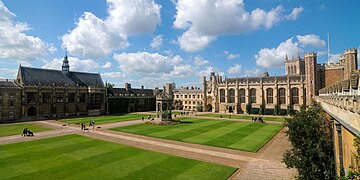 Great Court, Trinity College
Great Court, Trinity College
-
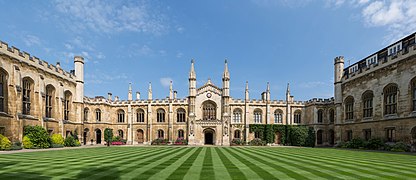 Corpus Christi College New Court
Corpus Christi College New Court
-
 Gatehouse, Gonville and Caius College
Gatehouse, Gonville and Caius College
-
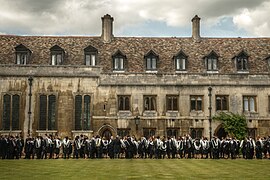 First Court, Pembroke College
First Court, Pembroke College
-
 Gatehouse, Selwyn College
Gatehouse, Selwyn College
-
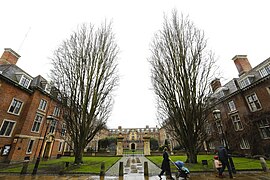 Main Court, St Catharine's College
Main Court, St Catharine's College
-
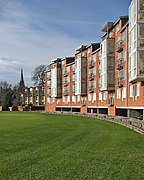 Hughes Hall and Fenner's
Hughes Hall and Fenner's
-
 Bredon House of Wolfson College
Bredon House of Wolfson College
-
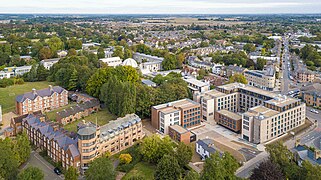 St Edmund's College
St Edmund's College
-
 West Lodge Garden, Downing College
West Lodge Garden, Downing College
-
Queens' College Old Gatehouse
-
 Dining Hall of Magdalene College
Dining Hall of Magdalene College
-
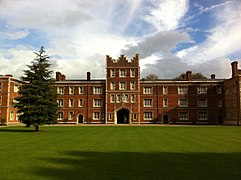 Chapel Court, Jesus College
Chapel Court, Jesus College
-
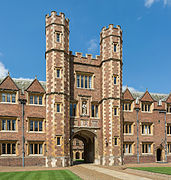 Second Court, St John's College
Second Court, St John's College
-
 Trinity Hall
Trinity Hall
-
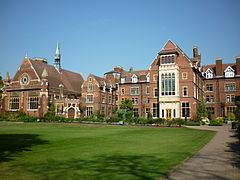 The Cavendish Building, Homerton College
The Cavendish Building, Homerton College
-
 Darwin College
Darwin College
-
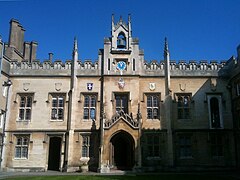 The chapel, Sidney Sussex College
The chapel, Sidney Sussex College
-
 Judge Business School interior
Judge Business School interior
-
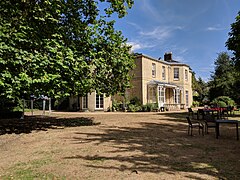 The Grove at Fitzwilliam College
The Grove at Fitzwilliam College
-
 Gatehouse, Girton College
Gatehouse, Girton College
See also
- Armorial of British universities
- Cambridge University Constabulary
- Cambridge University primates
- Coat of arms of the University of Cambridge
- List of medieval universities
- List of Nobel laureates affiliated with the University of Cambridge
- List of organisations and institutions associated with the University of Cambridge
- List of organisations with a British royal charter
- List of professorships at the University of Cambridge
- List of universities in the United Kingdom
Notes
- New UCAS Tariff system from 2016
References
Citations
- ^ Colleges of the University of Cambridge
- "Reports and Financial Statement 2019" (PDF). University of Cambridge. Retrieved 2 April 2020.
- Colleges £4,101.2M, University £3,020.0M
- ^ "Reports and the Financial Statements 2019" (PDF). University of Cambridge. Retrieved 25 August 2021.
{{cite web}}: CS1 maint: url-status (link) - ^ "Who's working in HE?". HESA. Retrieved 25 August 2021.
{{cite web}}: CS1 maint: url-status (link) - "Cambridge at a glance". September 2020.
- "Estate Data". Estate Management. University of Cambridge. 28 November 2016. Retrieved 1 April 2018.
- "Identity Guidelines – Colour" (PDF). University of Cambridge Office of External Affairs and Communications. Archived from the original (PDF) on 10 September 2008. Retrieved 28 March 2008.
- ^ "Early records". University of Cambridge. 28 January 2013. Retrieved 5 December 2019.
- "QS World University Rankings 2023: Top Global Universities". Top Universities. Retrieved 8 June 2022.
- ^ "All Known Cambridge Olympians". Hawks Club. Retrieved 17 May 2019.
- "Nobel prize winners". University of Cambridge. 28 January 2013. Retrieved 10 June 2022.
- Catto, J. I. (1984). The History of the University of Oxford: I The Early Oxford Schools (1st ed.). Oxford: Clarendon Press. pp. 37–41. ISBN 0199510113.
- "A Brief History: Early records". University of Cambridge. Retrieved 17 August 2008.
- Tapper, Ted; Palfreyman, David (2011). "The Tutorial System: The Jewel in the Crown". Oxford, the Collegiate University. Higher Education Dynamics. Vol. 34. Springer. pp. 95–115. doi:10.1007/978-94-007-0047-5_6. ISBN 978-94-007-0046-8. Retrieved 7 June 2021.
- "What should students expect from their College and the University?". University of Cambridge. December 2017. Retrieved 7 June 2021.
- "The Jewel in the Crown?". David Palfreyman. Retrieved 7 June 2021.
- "'Jewel in the crown?' The Oxbridge College: its origin, character and future" (PDF). Duncan Dormor. Retrieved 7 June 2021.
- "The Tutorial System: The Jewel in the Crown". Ted Tapper, David Palfreyman. Retrieved 7 June 2021.
- Lists of institutions of higher education by endowment size
- Adams, Richard; Greenwood, Xavier (28 May 2018). "Oxford and Cambridge university colleges hold £21bn in riches". The Guardian.
- Colleges £7,424.3M, University (consolidated) £5,144.8M
- "Appointment of the Vice-Chancellor" (PDF). University of Cambridge. 2022. Retrieved 7 June 2022.
- "UK Innovation Strategy: Leading the future by creating it" (PDF). Department for Business, Energy & Industrial Strategy. Retrieved 26 July 2021.
- Davies, Mark (4 November 2010). "'To lick a Lord and thrash a cad': Oxford 'Town & Gown'". BBC News. BBC. Retrieved 3 January 2014.
- Leedham-Green, Elisabeth (1996). A Concise History of the University of Cambridge. Cambridge University Press. p. 3. ISBN 978-0-521-43978-7. Retrieved 9 May 2015.
- de Ridder-Symoens, Hilde (2003). Cambridge University Press (ed.). A History of the University in Europe: Universities in the Middle Ages. Vol. 1. p. 89. ISBN 978-0-521-54113-8.
- ^ Hackett, M.B. (1970). The original statutes of Cambridge University: The text and its history. Cambridge University Press. p. 178. ISBN 978-0-521-07076-8. Retrieved 2 September 2012.
- Willey, David (2012). "Vatican reveals Cambridge papers". Cam. 66: 5.
- Cooper, Charles Henry (1860). Memorials of Cambridge. Vol. 1. W. Metcalfe. p. 32. Retrieved 9 September 2012.
- Helmholtz, R.H. (1990). Roman Canon Law in Reformation England. Cambridge Studies in English Legal History. Cambridge University Press. pp. 35, 153. ISBN 978-0-521-38191-8.
- Thompson, Roger, Mobility & Migration, East Anglian Founders of New England, 1629–1640, Amherst: University of Massachusetts Press, 1994, 19.
- Forsyth, A. R. (1935). "Old Tripos days at Cambridge". The Mathematical Gazette. 19 (234): 162–179. doi:10.2307/3605871. JSTOR 3605871. S2CID 165040321.
- ^ Forfar, David (1996). "What became of the Senior Wranglers?". Mathematical Spectrum. 29 (1).
- "The History of Mathematics in Cambridge". Faculty of Mathematics, University of Cambridge. Retrieved 9 September 2012.
- The six alumni are Michael Atiyah (Abel Prize and Fields Medal), Enrico Bombieri, Simon Donaldson, Richard Borcherds, Timothy Gowers, Alan Baker and the four official representatives are John G. Thompson, Alan Baker, Richard Borcherds, Timothy Gowers (see also "Fields Medal". Wolfram MathWorld. Retrieved 3 December 2009.)
- The National Archives (ed.). "Cambridge University Act 1856". Retrieved 2 May 2012.
- University of Cambridge, ed. (4 May 2010). "Biography – The Hon. Richard Fitzwilliam, 7th Viscount FitzWilliam". Archived from the original on 30 June 2013. Retrieved 2 May 2012.
- Taylor 1994, p. 22
- Cambridge University Physics Society (1995). Cambridge University Physics Society (ed.). A Hundred Years and More of Cambridge Physics. ISBN 978-0-9507343-1-6.
- John Aldrich – "The Maths PhD in the UK: Notes on its History – Economics"
- University of Cambridge, ed. (28 January 2013). "The Revived University of the Nineteenth and Twentieth Centuries". Retrieved 7 August 2014.
- "A Brief History: The University after 1945". University of Cambridge. Archived from the original on 4 August 2008. Retrieved 9 May 2015.
- Chambers, Suzanna (31 May 1998). "At last, a degree of honour for 900 Cambridge women". The Independent. Retrieved 9 May 2015.
- "Trinity Hall's Steamboat Ladies". Trinity news. 14 March 2012. Retrieved 9 September 2012.
- Martin, Nicole (8 June 2006). "St Hilda's to end 113-year ban on male students". The Daily Telegraph. UK. Archived from the original on 2 December 2008. Retrieved 8 September 2008.
- "Single-sex colleges: a dying breed?". HERO. June 2007. Archived from the original on 12 June 2008. Retrieved 20 April 2009.
- "Special No 19". Cambridge University Reporter. Retrieved 8 September 2008.
- Firth Green, Richard (2002). A Crisis of Truth: Literature and Law in Ricardian England. Philadelphia: University of Pennsylvania Press. ISBN 978-0-8122-1809-1.
- Shepard, Alexandra; Phil, Withington (2000). Manchester University Press (ed.). Communities in Early Modern England: Networks, Place, Rhetoric. pp. 216–234. ISBN 978-0-7190-5477-8. Retrieved 4 September 2012.
- Bringham, Allan (7 October 2008). "Is Town v Gown a thing of the past?". Cambridge Evening News. Retrieved 9 May 2015 – via Cambridge Online.
- "What is the Cambridge Phenomenon?". Cambridge Phenomenon. Retrieved 4 September 2012.
- "Choir that sings to the world". BBC. 24 December 2001. Retrieved 8 September 2008.
- Baxter, Elizabeth (18 December 2009). "Carols from King's: Cambridge prepares for Christmas". The Daily Telegraph. Archived from the original on 10 January 2022.
- "Cambridge City: Annual demographic and socio-economic report" (PDF). Cambridgeshire County Council. April 2011. Archived from the original (PDF) on 28 August 2013. Retrieved 4 September 2012.
- "A brief history of Punting". Cambridge River Tour. Retrieved 4 September 2012.
- Vitullo-Martin, J. (19 December 2009). "What the late Middle Ages wrought". The Wall Street Journal.
- "Faculty of History: The building". University of Cambridge. Retrieved 9 May 2015.
- "Modernist building at St John's College Cambridge is listed". English Heritage. 31 March 2009./
- Woodcock, N.; Norman, D. (20 August 2010). "Building Stones of Cambridge: A walking tour around the historic city-centre. Department of Earth Sciences". University of Cambridge Retrieved from. Archived from the original on 15 January 2014.
- Joshi, A.; Ryan, D. (20 June 2013). "Bricks: A Light Foundation". Johnianblog.blogspot.co.uk.
- "Map of the University of Cambridge". University of Cambridge. Retrieved 4 September 2012.
- "School of Clinical Medicine: History of the School". University of Cambridge. Archived from the original on 9 December 2012. Retrieved 9 May 2015.
- "West Cambridge site". University of Cambridge. Archived from the original on 13 March 2012. Retrieved 9 May 2015.
- "Business school rankings: University of Cambridge, Judge Business School". Financial Times. Retrieved 3 January 2013.
- Laker, Laura (17 August 2011). "What makes Cambridge a model cycling city?". The Guardian. Retrieved 9 May 2015.
- "The University as a charity". University of Cambridge. 21 March 2013. Retrieved 12 April 2021.
- O'Grady, Jane (13 June 2003). "Obituary – Professor Sir Bernard Williams". The Guardian. UK. Retrieved 8 May 2009.
- Bayliss, Chloe (11 March 2019). "Lucy Cavendish to become mixed-gender college, admitting students from age 18". Varsity (Press release). Cambridge, UK. Retrieved 22 December 2020.
- "Information about Churchill College". Churchill College. Retrieved 7 January 2008.
- "About St. Catharine's College". University of Cambridge. Retrieved 8 September 2008.
- "Alternative Prospectus" (PDF). Cambridge University Students' Union. Archived from the original (PDF) on 27 March 2009. Retrieved 8 September 2008.
- Drage, Mark (7 March 2008). "Survey ranks colleges by green credentials". Varsity. Archived from the original on 10 September 2008. Retrieved 9 May 2015.
- "Homerton College Accommodation Guide". Homerton College. Archived from the original on 4 April 2013. Retrieved 13 March 2013.
- "Trinity College Accommodation Guide". Trinity College. Retrieved 13 March 2009.
- "Analysis: Cambridge Colleges – £20,000 difference in education spending". The Cambridge Student. Archived from the original on 1 May 2013. Retrieved 25 April 2013.
- "Westcott House – Partner Universities". Westcott.cam.ac.uk. Archived from the original on 9 July 2012. Retrieved 4 February 2013.
- "Statutes and Ordinances 2011: Admission to Degrees" (PDF). University of Cambridge. 21 May 2011. Archived from the original (PDF) on 18 October 2016. Retrieved 3 September 2012.
- "Cambridge – Colleges and departments". University of Cambridge. 24 January 2013. Retrieved 27 November 2013.
- Ireland, Paul (29 June 2016). "Personal enrichment". www.ice.cam.ac.uk. Retrieved 5 October 2021.
- "About the Schools, Faculties & Departments". University of Cambridge. Retrieved 1 May 2010.
- "Home – News – University of Cambridge". Admin.cam.ac.uk. Archived from the original on 26 June 2011. Retrieved 4 February 2013.
- "Update: Booming Blessed To Bloom As Chancellor? " The Tab". Cambridgetab.co.uk. 2 June 2011. Retrieved 4 February 2013.
- Davies, Caroline (17 June 2011). "Cambridge university chancellor race gets tasty as grocer joins in". The Guardian. London. Retrieved 26 June 2011.
- ^ "Election for the Office of Chancellor". 21 June 2011. Archived from the original on 14 December 2013. Retrieved 26 June 2011.
- "University of Cambridge appoints new Acting Vice-Chancellor". University of Cambridge. 24 May 2022. Retrieved 13 October 2022.
- Grace 2 5 December 2007
- "How the University works: The Senate". University of Cambridge. 20 June 2011. Archived from the original on 17 February 2013. Retrieved 9 May 2015.
- Statutes and Ordinances, 2007–2008
- "Annual Report of the Council for 2003–04". Cambridge University Reporter. 15 December 2004. Retrieved 8 September 2008.
- Grace 2 5 December 2008
- Acta in the Reporter, No 6107, publishing Results of Ballot
- "Statutes approved: Notice". Cambridge University Reporter. 23 July 2008. Retrieved 8 September 2008.
- Mead, T.J. (25 April 2007). "Developing governance by building on good practice: a green paper issued by the University Council". Cambridge University Reporter. CXXXVII (25). Archived from the original on 11 May 2007. Retrieved 9 May 2015.
- "Stormzy announces second year of 'The Stormzy Scholarship', a student funding scheme with Cambridge University". University of Cambridge. 16 August 2019. Retrieved 24 January 2021.
- jim.smith (16 August 2018). "The programme". Gates Cambridge. Retrieved 25 March 2020.
- "Cambridge University halts £400m deal with UAE over Pegasus spyware claims". The Guardian. 14 October 2021. Retrieved 14 October 2021.
- ^ Cambridge university issues its first £350m bond Archived 8 December 2015 at the Wayback Machine L. Tidy, The Cambridge Student, News, 11 October 2012
- Cambridge university issues first bond G. Wearden, The Guardian, 10 October 2012 Archived 18 January 2017 at the Wayback Machine
- "Golden opportunities". Nature. 6 July 2005. Retrieved 19 October 2010.
- "University Admissions Statistics (2019 cycle)" (PDF). University of Cambridge.
- "Undergraduate Admissions Statistics (2018 cycle)" (PDF). University of Cambridge.
- "End of Cycle 2017 Data Resources DR4_001_03 Applications by provider". UCAS. UCAS. 2017. Retrieved 25 January 2018.
- "Sex, area background and ethnic group: C05 University of Cambridge". UCAS. UCAS. 2017. Retrieved 25 January 2018.
- "End of Cycle 2016 Data Resources DR4_001_02 Main scheme acceptances by provider". UCAS. UCAS. 2016. Retrieved 10 February 2017.
- "Top UK University League Table and Rankings". Complete University Guide.
- "Application statistics". www.undergraduate.study.cam.ac.uk.
- "Undergraduate Admissions Statistics" (PDF). University of Cambridge. Retrieved 25 August 2021.
{{cite web}}: CS1 maint: url-status (link) - Yeomans, Emma. "Cambridge to withdraw places if oversubscribed". The Times. ISSN 0140-0460. Retrieved 5 February 2021.
- "Cambridge offer-holders told their places may be withdrawn if their course is over-subscribed". University of Cambridge. 3 February 2021. Retrieved 5 February 2021.
- "Entrance requirements". Cam.ac.uk. Retrieved 4 February 2013.
- "Cambridge entry level is now A*AA". BBC News. 16 March 2009. Retrieved 27 May 2010.
- "Cambridge Interviews: the facts" (PDF). University of Cambridge. Archived from the original (PDF) on 18 February 2011. Retrieved 11 August 2009.
- Oxbridge 'over-recruits from eight schools' BBC
- Walford, Geoffrey (1986). Life in Public Schools. Taylor & Francis. p. 202. ISBN 978-0-416-37180-2. Retrieved 2 February 2009.
- "Undergraduate Study – Admissions tests". University of Cambridge. Retrieved 20 May 2013.
- Henry, Julie (23 January 2013). "Cambridge University entrance exam to make a comeback". The Daily Telegraph.
- "Board of Graduate Studies admissions flowchart". University of Cambridge. Archived from the original on 8 September 2008. Retrieved 8 September 2008.
- "Guide to the Winter Pool" (PDF). Cam.ac.uk. Retrieved 15 March 2022.
- ^ "Guide to the Winter Pool" (PDF). Undergradute.study.cam.ac.uk. Retrieved 15 March 2022.
- "Official Cambridge 2022 Applicants Thread". Thestudentroom.co.uk.
- ^ "Compulsory pooling – a Freedom of Information request to University of Cambridge". WhatDoTheyKno.comw. 26 November 2020. Retrieved 12 April 2021.
- "Application statistics". Undergraduate.study.cam.ac.uk. Retrieved 15 March 2022.
- "Oxbridge 'Elitism'" (PDF). 9 June 2014.
- "Lords Hansard text for 5 Jun 2003 (230605w03)". publications.parliament.uk.
- Brackley, Paul. "University of Cambridge to welcome record proportion of state school students in October 2021". Cambridge Independent. Retrieved 26 April 2022.
- "Philip Hensher: Rejecting Oxbridge isn't clever – it's a mistake". The Independent. 19 January 2012. Retrieved 26 April 2022.
- "Number of Cambridge state school students falls". The Guardian. 4 April 2008. Retrieved 3 September 2012.
- "Report by the Sutton Trust" (PDF). Sutton Trust. Archived from the original (PDF) on 24 June 2008. Retrieved 8 September 2008.
- Johnson, Rachel (2002). "A bias against excellence". The Spectator. UK. Retrieved 8 September 2008.
- "Undergraduate Admissions Statistics, 2020 Cycle" (PDF).
- "Education". The Times. 21 January 2013. Retrieved 4 February 2013.
- Parel, Kurien; Ball, James (26 February 2013). "Oxford University accused of bias against ethnic minority applicants". The Guardian.
- Parel, Kurien; Ball, James (13 March 2013). "Cambridge University medicine admissions show race gap". The Guardian.
- Bonetti, Lisa (21 February 2018). "Interviews". Undergraduate.study.cam.ac.uk. Retrieved 8 June 2018.
- Cambridge University's poor diversity record highlighted by report The Guardian
- "Half of universities have fewer than 5% poor white students". BBC News. 14 February 2019. Retrieved 8 February 2021.
- ^ Media, P. A. (13 January 2021). "Cambridge University to offer free foundation year for disadvantaged pupils". The Guardian. Retrieved 8 February 2021.
- "Cambridge University starts new foundation courses for 'disadvantaged' students". BBC News. 13 January 2021. Retrieved 8 February 2021.
- "University of Cambridge Term dates". University of Cambridge. Retrieved 19 April 2010.
- University of Cambridge (2009). Cambridge University Press (ed.). Statutes and Ordinances of the University of Cambridge 2009. pp. 179–180. ISBN 978-0-521-13745-4. Retrieved 2 September 2012.
- Sastry, Tom; Bekhradnia, Bahram (25 September 2007). "The Academic Experience of Students in English Universities (2007 report)" (PDF). Higher Education Policy Institute. pp. footnote 14. Archived from the original (PDF) on 25 March 2009. Retrieved 4 November 2007.
Even within Russell Group institutions, it is remarkable how consistently Oxford and Cambridge appear to require more effort of their students than other universities. On the other hand, they have fewer weeks in the academic year than other universities, so the extent to which this is so may be exaggerated by these results.
- "Undergraduate Study – How will I be taught". University of Cambridge. Retrieved 9 September 2012.
- Shepherd, Jessica (25 January 2011). "Cambridge considers end to one-to-one tuition". The Guardian. Retrieved 9 May 2015.
- Postman, Neil (1992). Technopoly: The Surrender of Culture to Technology. New York City: Alfred A. Knopf. ISBN 978-0-679-74540-2.
- "Building Projects". University of Cambridge. 7 April 2015. Retrieved 26 January 2018.
- ^ "Graduation: The Ceremony". University of Cambridge. Retrieved 3 September 2012.
- "Graduation dress code". Pembroke College. Retrieved 3 September 2012.
- "Facilities and resources". Cambridge Admissions Office. Retrieved 3 January 2013.
- "Legal Deposit in the British Library". The British Library. Retrieved 3 January 2013.
- "Museums & Collections". University of Cambridge. Retrieved 26 January 2018.
- "Oldest printing and publishing house". Guinnessworldrecords.com. 22 January 2002. Retrieved 28 March 2012.
- Black, Michael (1984). Cambridge University Press, 1583–1984. pp. 328–9. ISBN 978-0-521-66497-4.
- "About OCR – Oxford and Cambridge and RSA Examinations". OCR. Retrieved 3 January 2013.
- "Complete University Guide 2025". The Complete University Guide. 14 May 2024.
- "Guardian University Guide 2025". The Guardian. 7 September 2024.
- "Good University Guide 2025". The Times. 20 September 2024.
- "Academic Ranking of World Universities 2024". Shanghai Ranking Consultancy. 15 August 2024.
- "QS World University Rankings 2025". Quacquarelli Symonds Ltd. 4 June 2024.
- "THE World University Rankings 2025". Times Higher Education. 9 October 2024.
- "QS World University Rankings 2023: Top Global Universities". Top Universities. Retrieved 8 June 2022.
- "ShanghaiRanking's Academic Ranking of World Universities". www.shanghairanking.com. Retrieved 19 July 2021.
- "World University Rankings". Times Higher Education (THE). 25 August 2021. Retrieved 12 October 2022.
- "QS World University Rankings by Subject 2022". Top Universities. Retrieved 8 April 2022.
- Morgan, John. "Top Six Universities Dominate THE World Reputation Rankings". Archived from the original on 31 March 2015. Retrieved 29 July 2017.
"The rankings suggest that the top six-...Stanford University and the University of Oxford – form a group of globally recognised "super brands".
- "QS World University Rankings (2010)". Archived from the original on 3 April 2011.
- "QS World University Rankings (2011)". Archived from the original on 1 October 2011.
- "The Top 100 Global Universities". MSNBC. Archived from the original on 22 May 2008. Retrieved 8 September 2008.
- Shepherd, Jessica (16 May 2011). "University Guide 2012: Cambridge tops The Guardian league table". The Guardian. London.
- Watson, Roland; Elliott, Francis; Foster, Patrick. "The Times Good University Guide Subject Rankings". The Times. Archived from the original on 10 November 2008. Retrieved 26 November 2008.
- Sweeney, Kate (27 April 2015). "Cambridge retains UK's top university ranking". Business Weekly. Retrieved 9 May 2015.
- "The best UK universities chosen by major employers". Times Higher Education. London. 12 November 2015.
- Major, Lee Elliot (14 December 2001). "Cambridge tops research tables". The Guardian. UK. Retrieved 9 May 2015.
- MacLeod, Donald (22 September 2005). "University figures show sharp research divide". The Guardian. UK. Retrieved 8 September 2008.
- "Thomson Scientific ranks UK research". Thomson Scientific. 4 May 2006. Archived from the original on 21 August 2008. Retrieved 8 September 2008.
- "Cambridge continues its domination of research resources". Times Higher Education. 20 October 2006. Retrieved 9 May 2015.
- "Cambridge University press release". Archived from the original on 8 October 2006.
- Sheinman, Anna (4 January 2012). "Inside Cambridge: Fizz, Fellows and Formal Hall". Huffington Post. Retrieved 9 May 2015.
- "Living in Cambridge". Cambridge Trainee Librarians' Online Group. Archived from the original on 12 May 2012. Retrieved 9 May 2015.
- "JCRs/MCRs". Cambridge University Students' Union. Retrieved 26 January 2019.
- "Societies Directory". Cambridge University Students' Union. 12 January 2010. Retrieved 2 September 2012.
- Hawks' Club (ed.). "Origins of the Cambridge Blue". Archived from the original on 20 April 2013. Retrieved 4 January 2013.
- "Cambridge Sports Centre – Cambridge University Sports Department". Sport.cam.ac.uk. Archived from the original on 19 April 2014. Retrieved 19 April 2014.
- "Graduate Union". Cambridge University Graduate Union. Retrieved 4 July 2018.
- "About the Union". Cambridge University Students' Union. 27 June 2012. Retrieved 2 September 2012.
- "Officers". Cambridge Students' Union. 1 July 2021. Retrieved 9 September 2021.
- Bayliss, Killeen & Lally, Chloe, Molly & Catherine (5 March 2020). "Live: Cambridge SU election results". Varsity. Retrieved 9 September 2021.
{{cite web}}: CS1 maint: multiple names: authors list (link) - "Statement on the University's proposed partnership with the UAE". Cambridge SU. Retrieved 6 August 2021.
- "'This isn't right. My rapist is still in my college'," Varsity News, 16 November 2018.
- "She reported her rape to the University, then it was dismissed: How a second student's complaint was stopped in its tracks," Varsity News, 28 July 2019.
- Rosie Bradbury, "Cambridge graduate suing University over handling of sexual misconduct complaint," Varsity News, 13 August 2019.
- James Tapper, "Students slam Cambridge over handling of sexual misconduct cases," The Guardian, 22 February 2020.
- "The Nobel Prize in Chemistry 1980". NobelPrize.org. Retrieved 12 July 2019.
- "The Nobel Prize in Chemistry 1958". NobelPrize.org. Retrieved 12 July 2019.
- "Prof Sarah Cleaveland". Southern African Centre for Infectious Disease Surveillance. Archived from the original on 14 May 2014. Retrieved 10 June 2014.
- "Why Cambridge?". Cambridge Judge Business School. Archived from the original on 20 October 2012. Retrieved 9 May 2015.
- "International Cambridge – United States of America". University of Cambridge. 29 March 2012. Retrieved 2 September 2012.
- "'A brave bad man': Oliver Cromwell, 1599–1658". Cambridge University Library. Archived from the original on 27 December 2014. Retrieved 9 May 2015.
- "Filming Location Matching "Cambridge University, Cambridge, Cambridgeshire, England, UK" (Sorted by Popularity Ascending)". IMDb. Retrieved 21 August 2020.
- "Soler Halle". Oxford Reference. Retrieved 15 September 2020.
- "They were defeated". Evening Post. Wellington, NZ. 24 December 1932. p. 7. Archived from the original on 21 September 2011. Retrieved 7 October 2010.
- Crowley, Joseph N. (1994). No equal in the world: an interpretation of the academic presidency. Reno, NV: University of Nevada Press. p. 167. ISBN 978-0-87417-237-9. Retrieved 25 February 2012.
- Cox, David (22 March 2016). "Poetry or property punts: what's driving China's love affair with Cambridge?". The Guardian. ISSN 0261-3077. Retrieved 23 August 2020.
Sources
- Taylor, Kevin (1994). Central Cambridge: A Guide to the University and Colleges. Cambridge University Press. ISBN 978-0-521-45913-6.
Bibliography
- Anonymous (2009) . A Concise and Accurate Description of the University, Town and County of Cambridge. Cambridge University Press. ISBN 978-1-108-00065-9.
- Brooke, Christopher N. L. (1988–2004). A History of the University of Cambridge. Cambridge University Press, 4 vols., ISBN 0-521-32882-9, ISBN 0-521-35059-X, ISBN 0-521-35060-3, ISBN 0-521-34350-X
- Deacon, Richard (1985). The Cambridge Apostles: A History of Cambridge University's Elite Intellectual Secret Society. Cassell. ISBN 978-0-947728-13-7.
- Garrett, Martin (2004). Cambridge: A Cultural and Literary History, Signal Books. ISBN 1-902669-79-7
- Koyama, Noboru; Ruxton, Ian, transl. "Japanese Students at Cambridge University in the Meiji Era, 1868–1912: Pioneers for the Modernization of Japan". Archived from the original on 17 February 2009. Retrieved 8 August 2009., A Translation from a Japanese Original. Lulu Press. 2004. ISBN 978-1-4116-1256-3. This book includes information about the wooden spoon and the university in the 19th century as well as the Japanese students.
- Leader, Damien (1988–2004). A History of the University of Cambridge. Cambridge University Press. ISBN 978-0-521-32882-1.
- Lee, John S. and Christian Steer, eds, Commemoration in Medieval Cambridge History of the University of Cambridge, Boydell, 2018. ISBN 978-1-78327-334-8
- Leedham-Green, Elisabeth (1996). A Concise History of the University of Cambridge. Cambridge University Press. ISBN 978-0-521-43978-7.
- Rawle, Tim (2016). Adamson, John (ed.). Cambridge. Oxbridge Portfolio. ISBN 978-0-9572867-2-6.
- Smith, J.; Stray, C. (2001). Teaching and Learning in 19th-Century Cambridge. Boydell Press. ISBN 978-0-85115-783-2.
- Stubbings, Frank (1995). Bedders, Bulldogs and Bedells: A Cambridge Glossary. Cambridge University Press. ISBN 978-0-521-47978-3.
- Webb, Grayden (2005). The History of the University of Cambridge and Education in England. Cambridge University Press. ISBN 978-0-521-32882-1.
- Willis, Robert (1988). Clark, John Willis (ed.). The Architectural History of the University of Cambridge and of the Colleges of Cambridge and Eton. Cambridge University Press. ISBN 978-0-521-35851-4.
External links
- Official website

- Cambridge University Students' Union
- Cambridge University Graduate Union
- Interactive map—a zoomable map linking to all the university departments and colleges
- ACAD—A Cambridge Alumni Database, covering the period of approximately 1200 to 1900
| Links to related articles | |||||||||||||||||||||||||||||||||||||||||||||||||||||||||
|---|---|---|---|---|---|---|---|---|---|---|---|---|---|---|---|---|---|---|---|---|---|---|---|---|---|---|---|---|---|---|---|---|---|---|---|---|---|---|---|---|---|---|---|---|---|---|---|---|---|---|---|---|---|---|---|---|---|
| |||||||||||||||||||||||||||||||||||||||||||||||||||||||||
52°12′19″N 0°7′2″E / 52.20528°N 0.11722°E / 52.20528; 0.11722
Categories: